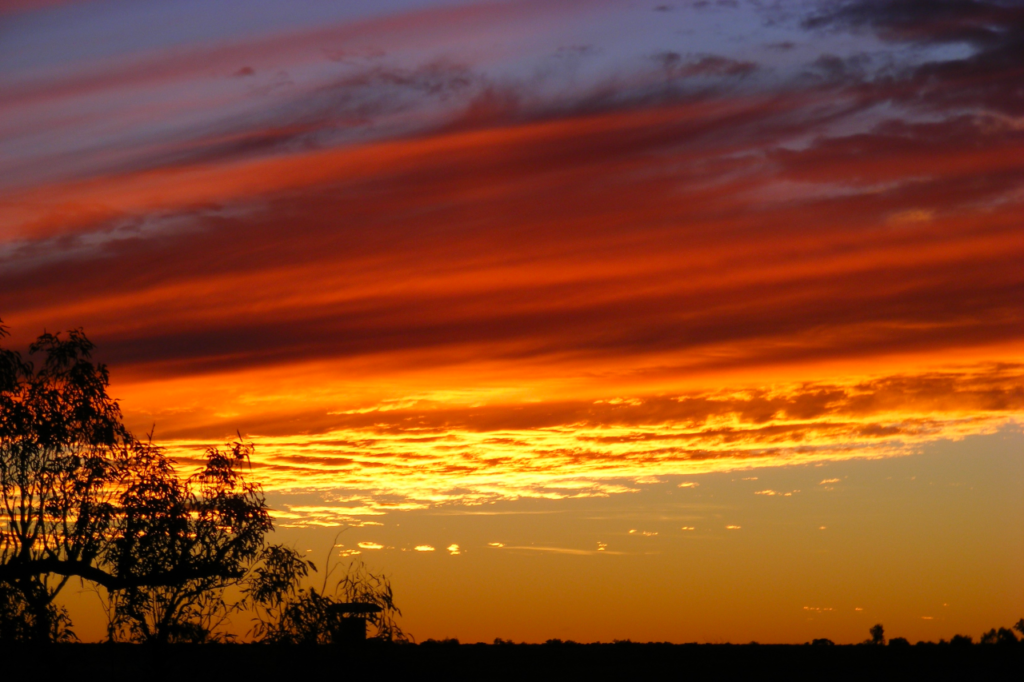Well, a bit more than three years, really, but three years on the road came and went with barley a whimper, due to this insidious pandemic, which has affected the lives of everyone. I had a little tradition of uploading a special post to celebrate each year I spent travelling, but three years anniversary came around with little fanfare; at that time travel plans were severely curtailed.
But, inspired again by warm sunny weather while I hibernate in Batchelor, I decided to have a somewhat belated celebration of three years living on the road by remembering some of the wonderful places I enjoyed visiting on my travels, before I started this blog.
And the bush hath friends to meet him, and their kindly voices greet him
In the murmur of the breezes and the river on its bars,
And he sees the vision splendid of the sunlit plains extended,
And at night the wond’rous glory of the everlasting stars.
Clancy of the Overflow, A.B. “Banjo” Patterson, published 1889
For me, these words always invoke a swelling of emotion in me, describing the absolutely wonderful things I see and feel out here in the outback. Thank you Banjo, for absolutely hitting the nail on the head!
Let me be honest, though; I love Banjo’s poetry, but he did forget to mention the heat, the flies, the dust, the ensuing mud-bath that follows any outback rain…
But the wonderful times, as epitomized by Banjo’s immortal words above, more than make up for that.
And that’s my story and I’m sticking to it!
Mount Connor, NT
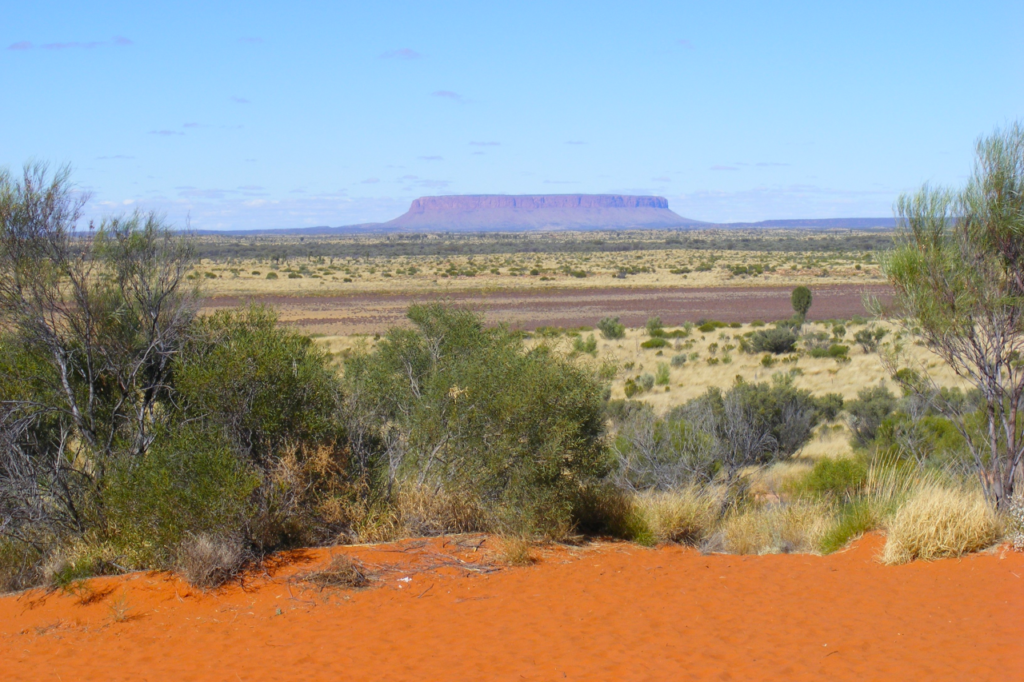
You pass this stunning flat-topped mountain on the road to Uluru. Mount Connor is spectacular and people often mistake this monolith for Uluru; although it is nowhere near as spectacular as Uluru, as you will see.
Uluru, NT
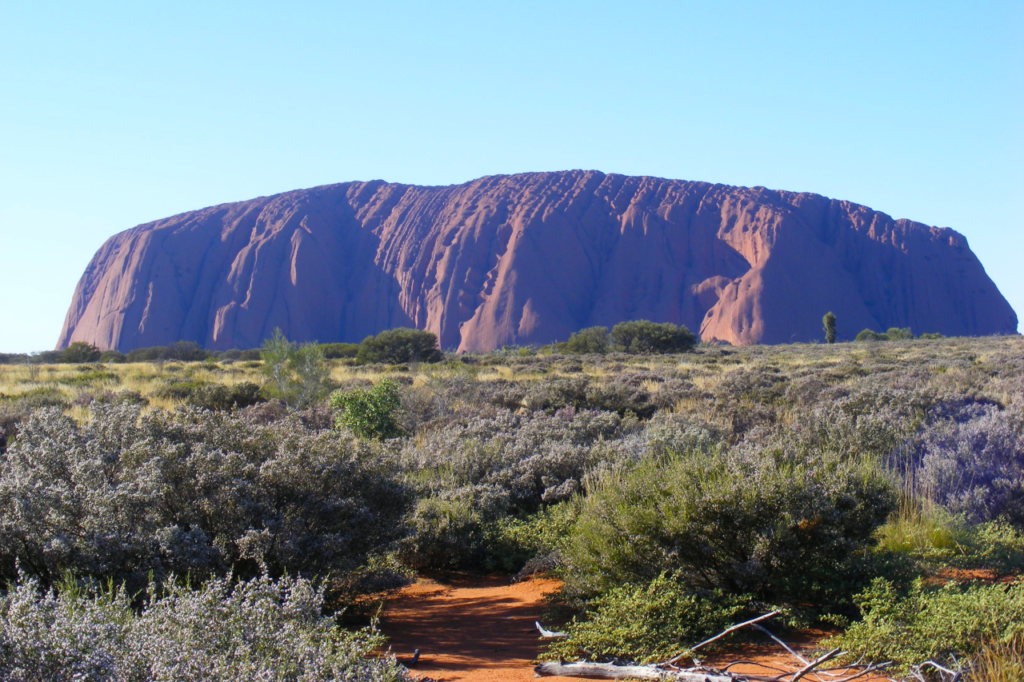
Probably one of the most well-known places on the planet, Uluru is an awesome place to see. It is hard to describe the immense power that the rock exudes.
It is big! It changes colour all during the day. It is amazing to watch it at any time, but especially when it glows orange/red as it reflects the setting sun.
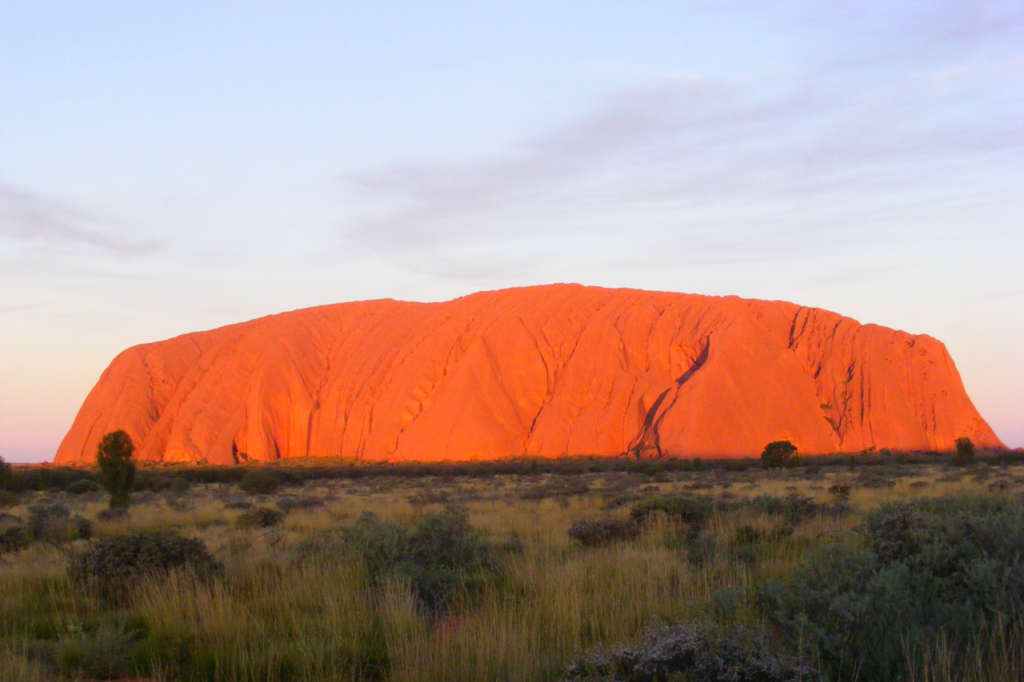
Kata Tjuta, NT
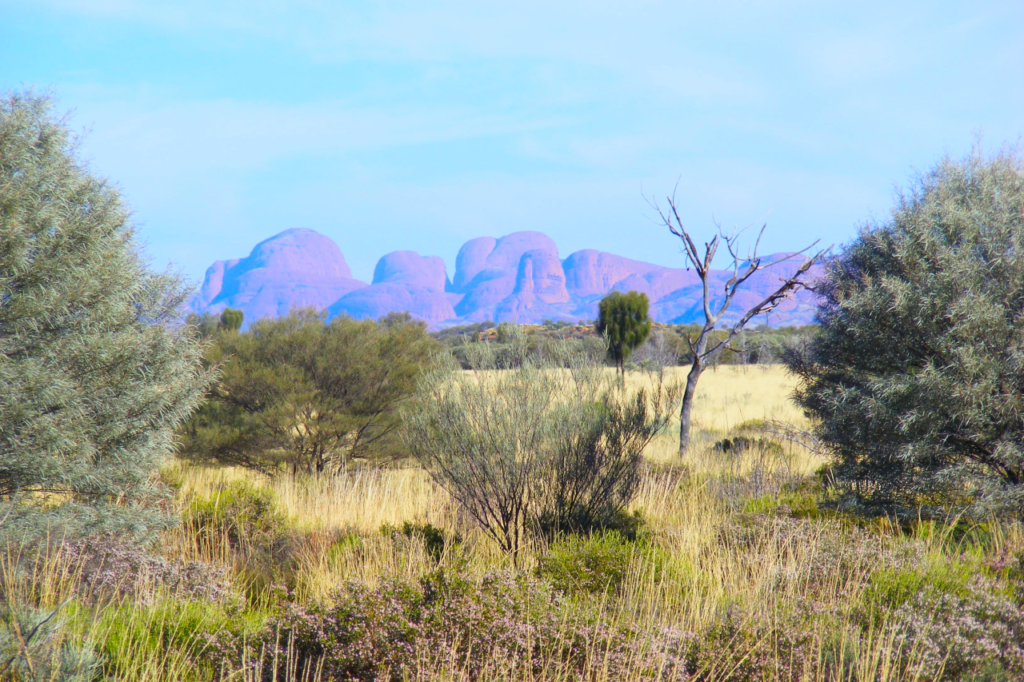
The soaring domes of Kata Tjuta are fascinating to walk around.
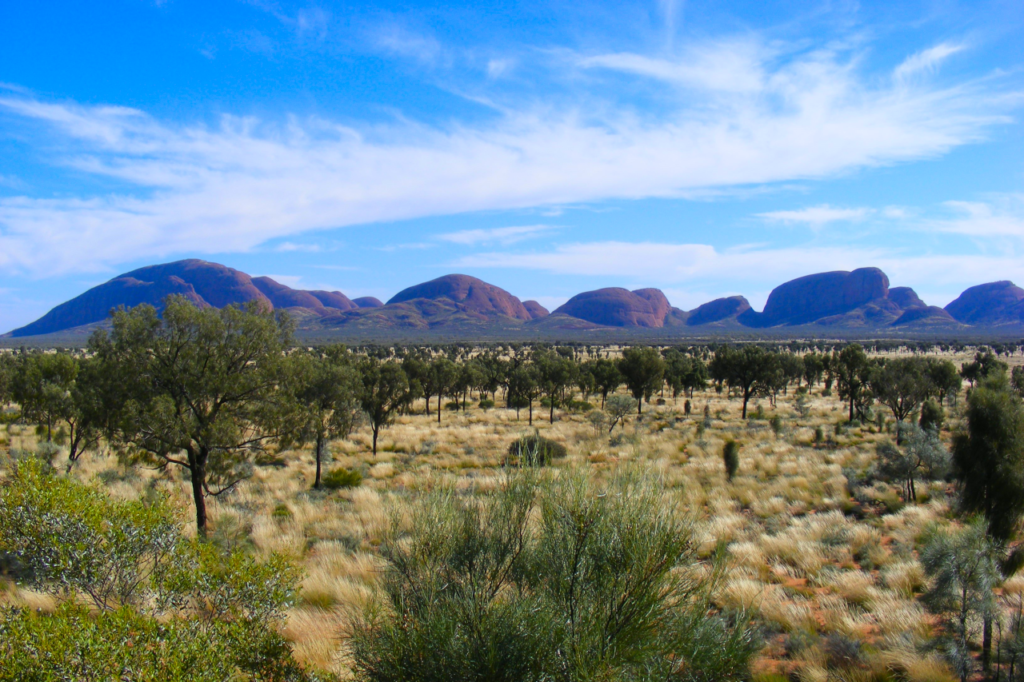
A walk of over 7km leads you through the domes, giving you an amazing view of this beautiful country.
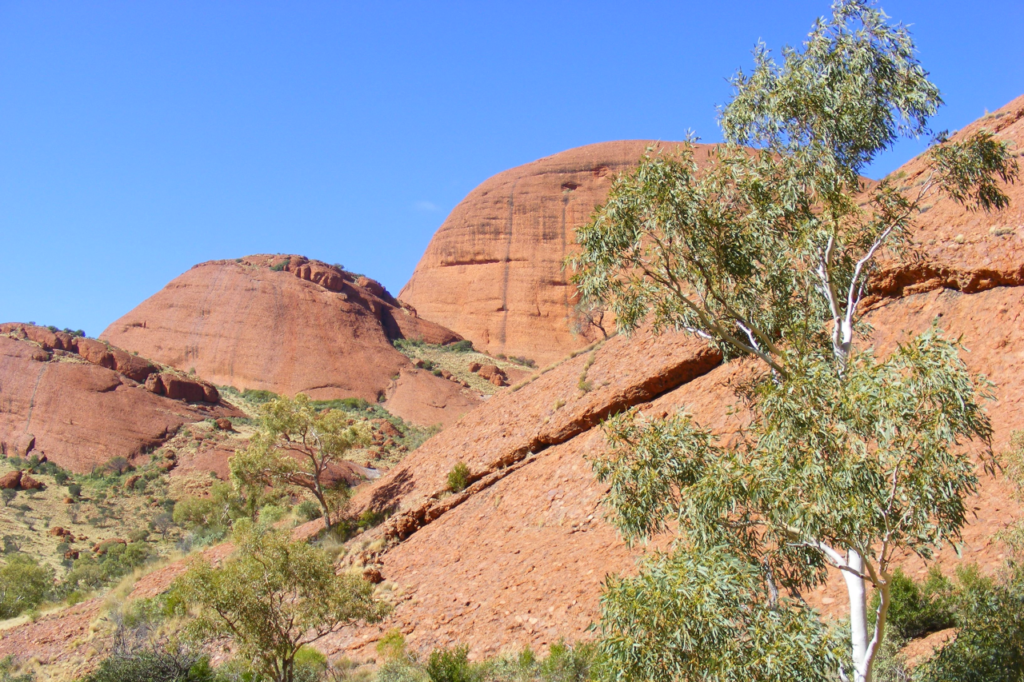
What can I say? Look at the pictures, nothing I can say can adequately describe this stunning place.
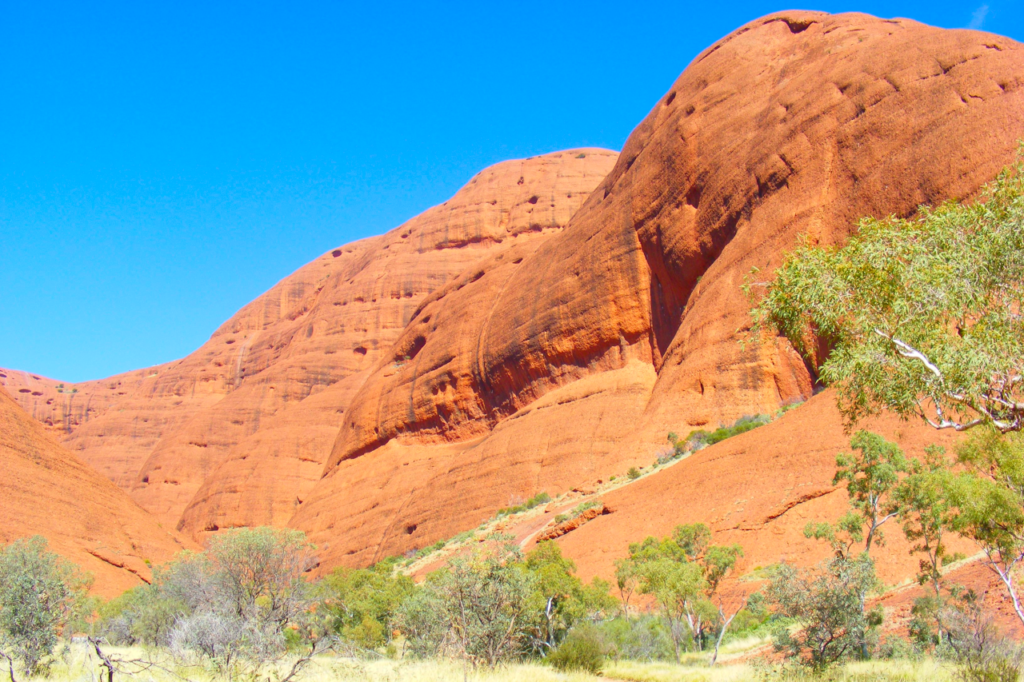
Rainbow Valley, NT
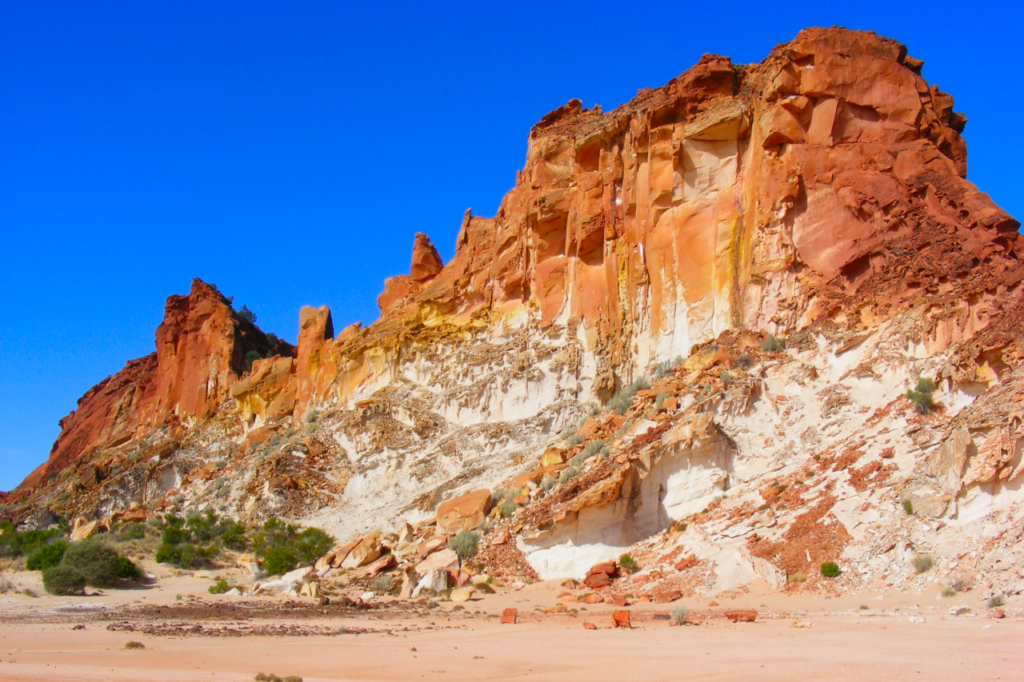
Amazing red sandstone cliffs seems to glow against the stunning blue of the outback sky
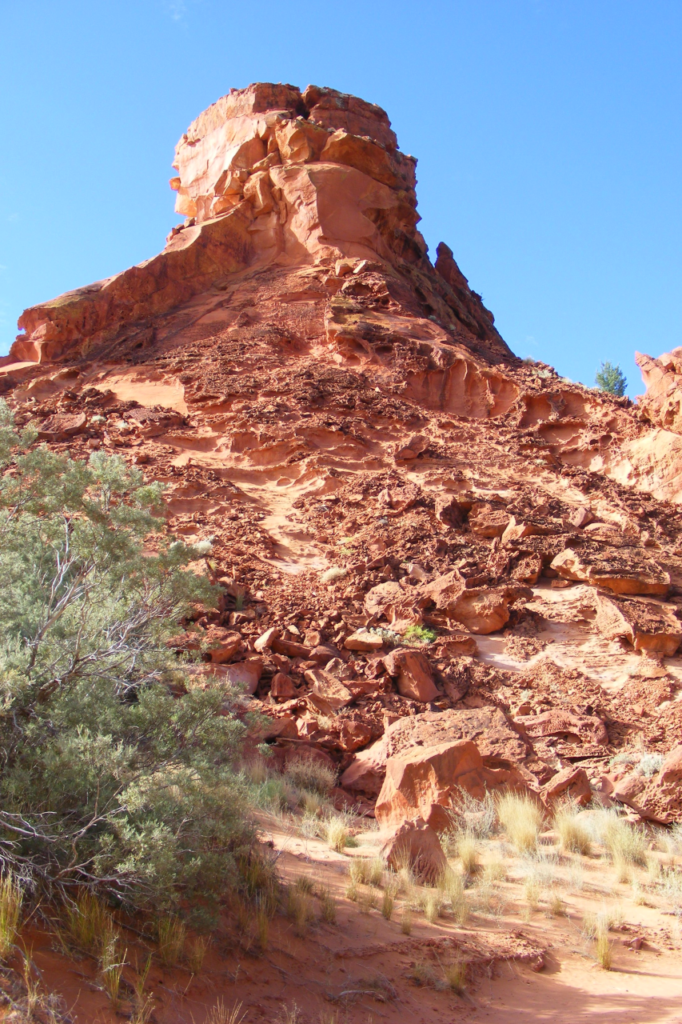
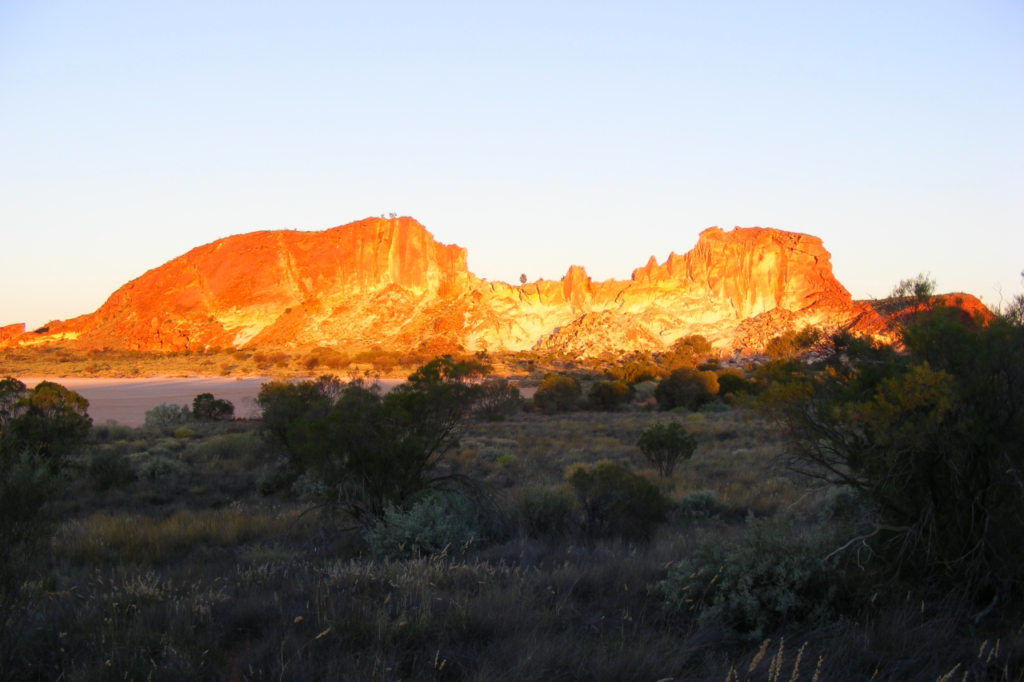
The Breakaways, SA
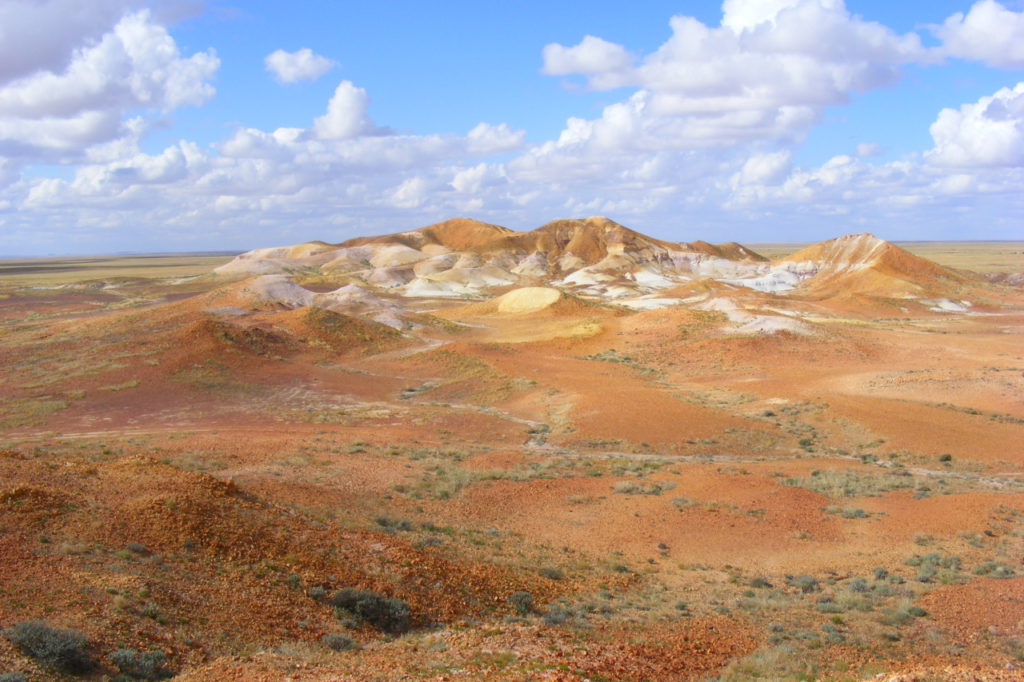
Not far from Coober Pedy, the Breakaways were once under the sea. Today they form spectacular flat-topped mesas in a striking, multicoloured valley .
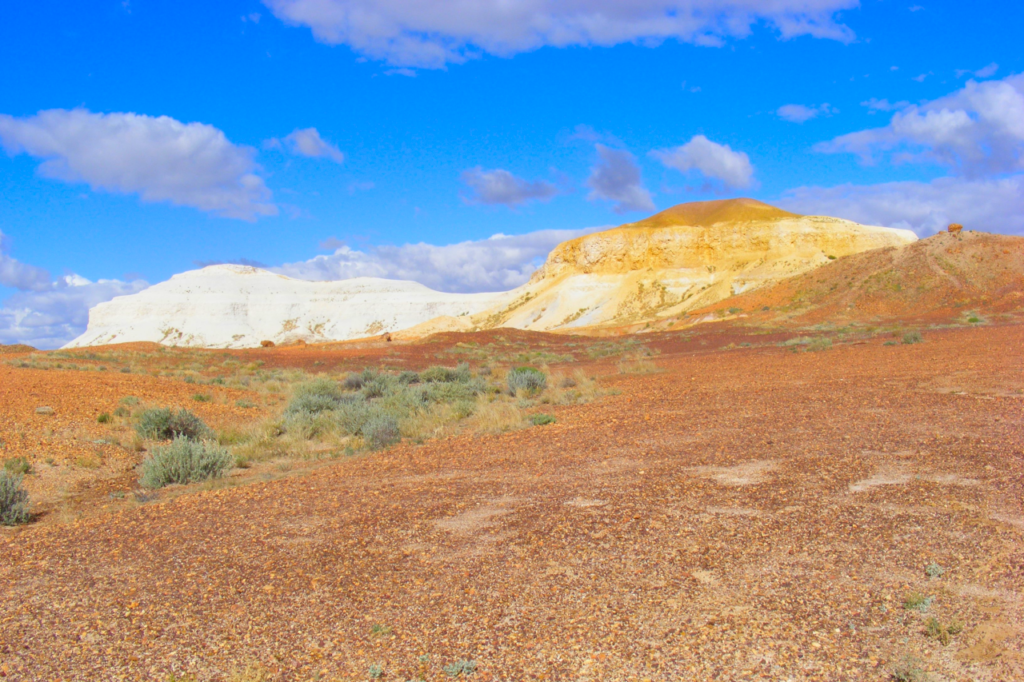
Outback Queensland
On the outer Barcoo, where the churches are few,
And men of religion are scanty,
On a road never cross’d ‘cept by folk that are lost,
One Michael McGee had a shanty.
A Bush Christening, A.B. “Banjo” Patterson, published 1893.
The Barcoo River, in the outback of western Queensland. The Barcoo, along with the Thomson River, merge into Cooper’s Creek and in a good year, these waters may reach Lake Eyre.
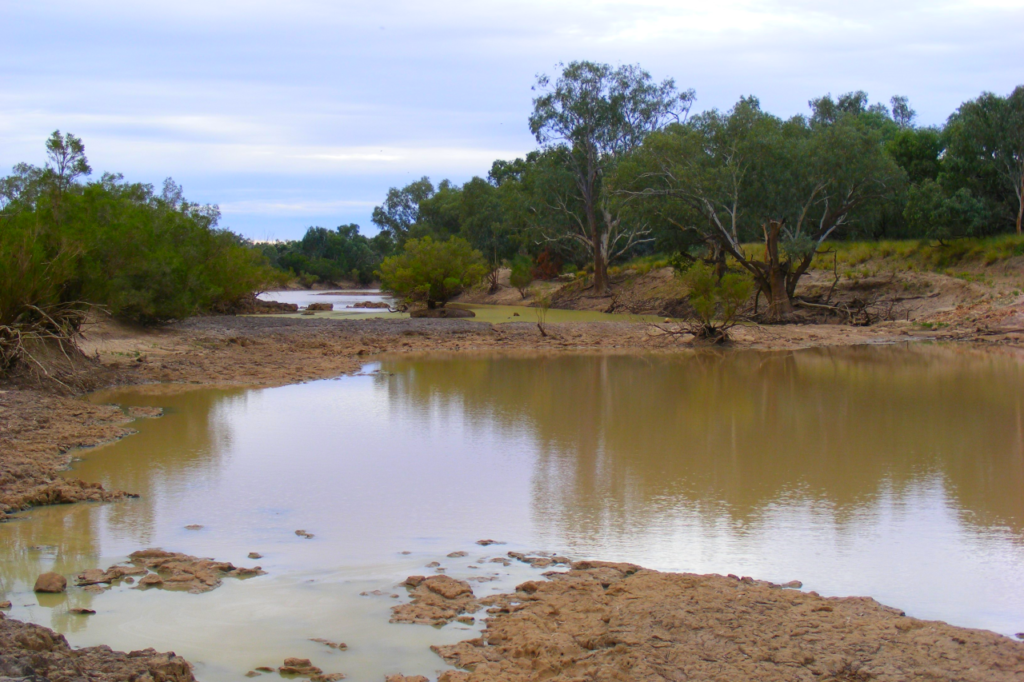
Patterson apparently stopped here at the shanty during a Cobb& Co coach trip northwards. Not much remains now, but this isolated place supposedly gave Banjo the inspiration for his poem “A Bush Christening”.
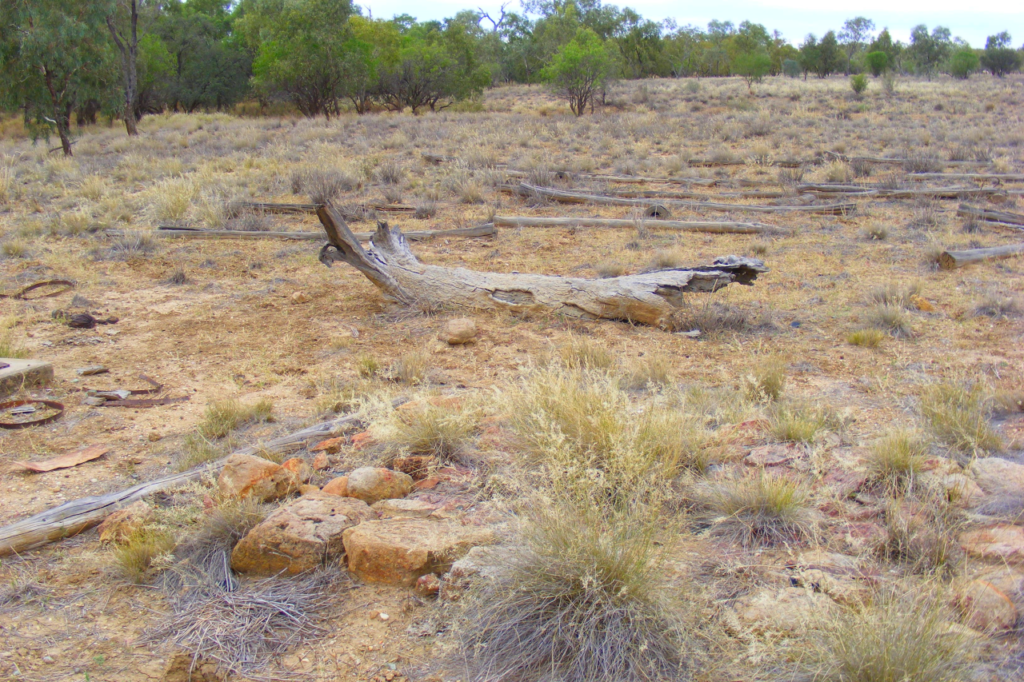
It was during another trip, two years afterwards, while at Dagworth Station, near Kynuna, Queensland, that Patterson was inspired to write “Waltzing Matilda”.
There isn’t much in Kynuna, except the Blue Heeler pub.
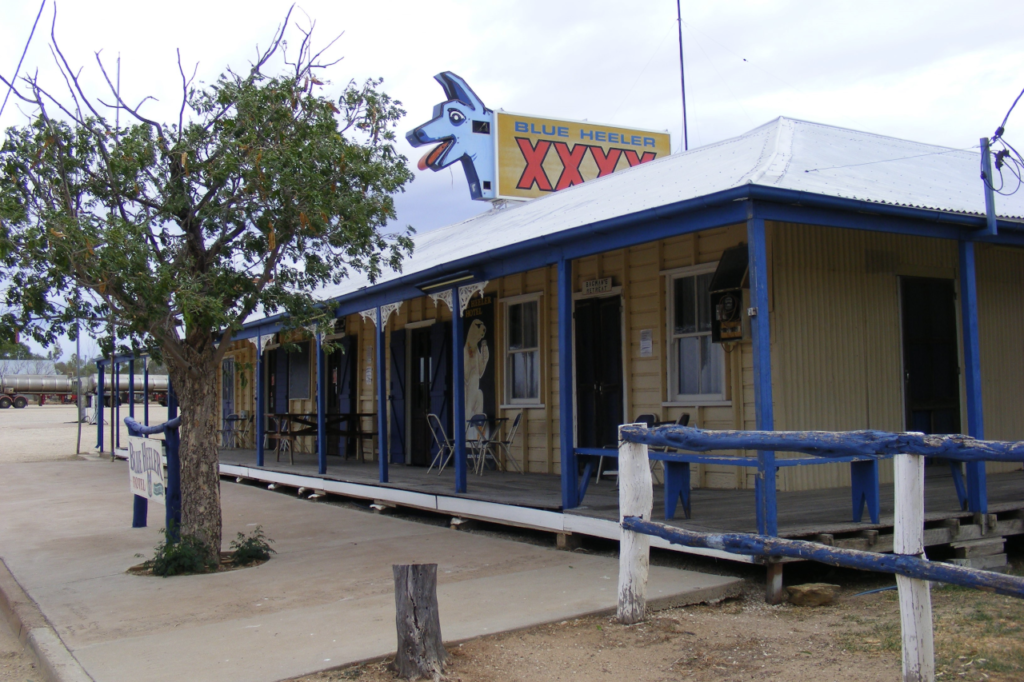
Some of the locals gather in the Kynuna main street to catch the latest gossip .
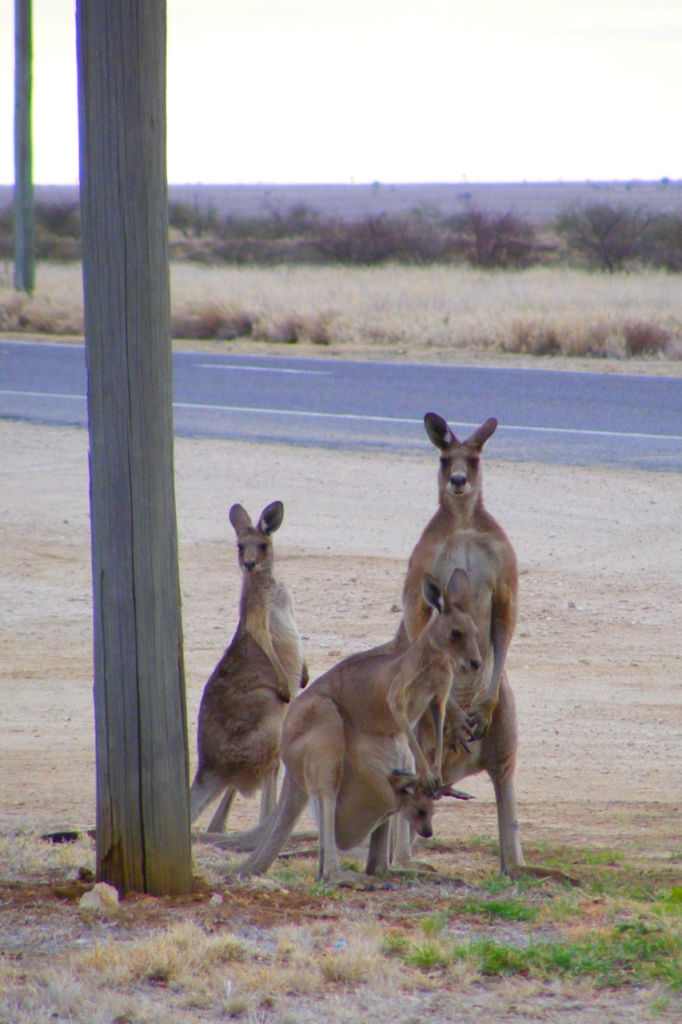
Lake Eyre, SA.
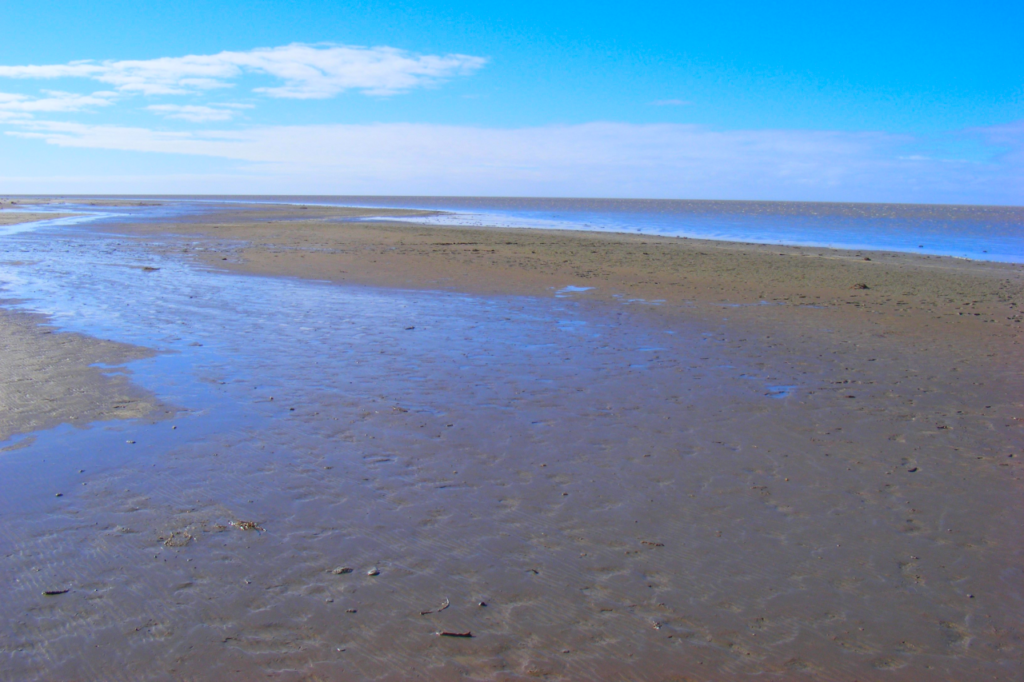
When I visited in 2011, Lake Eyre was pretty full of water. This was my first view of this remote but stunning landscape, which had transformed into an impressive inland sea.
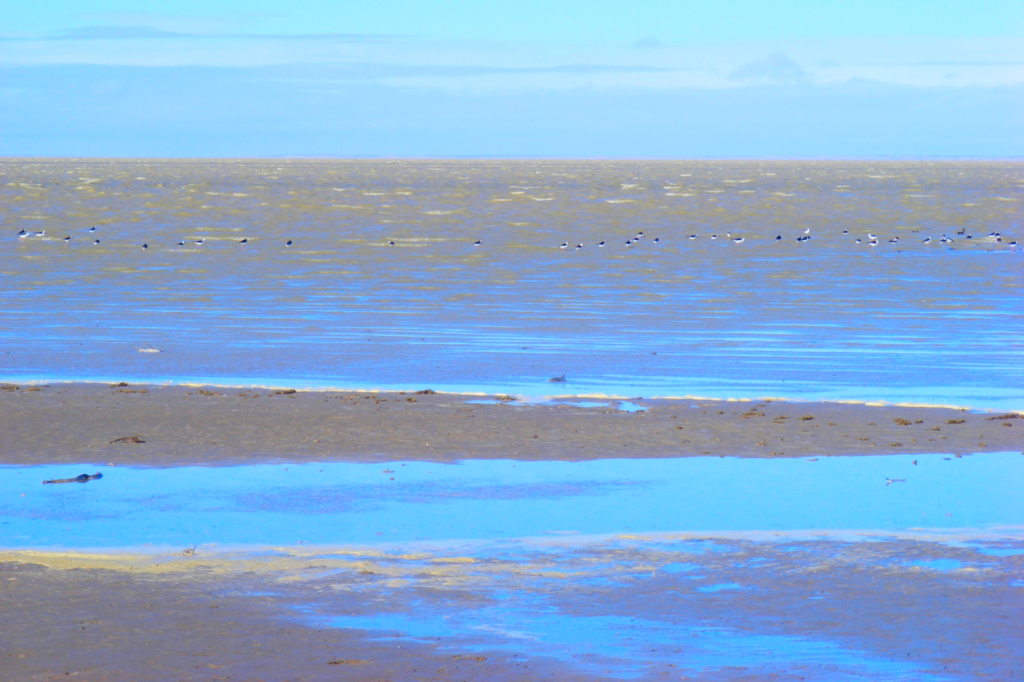
There were many wading birds happily living in the middle of the desert for the brief period the water remains.
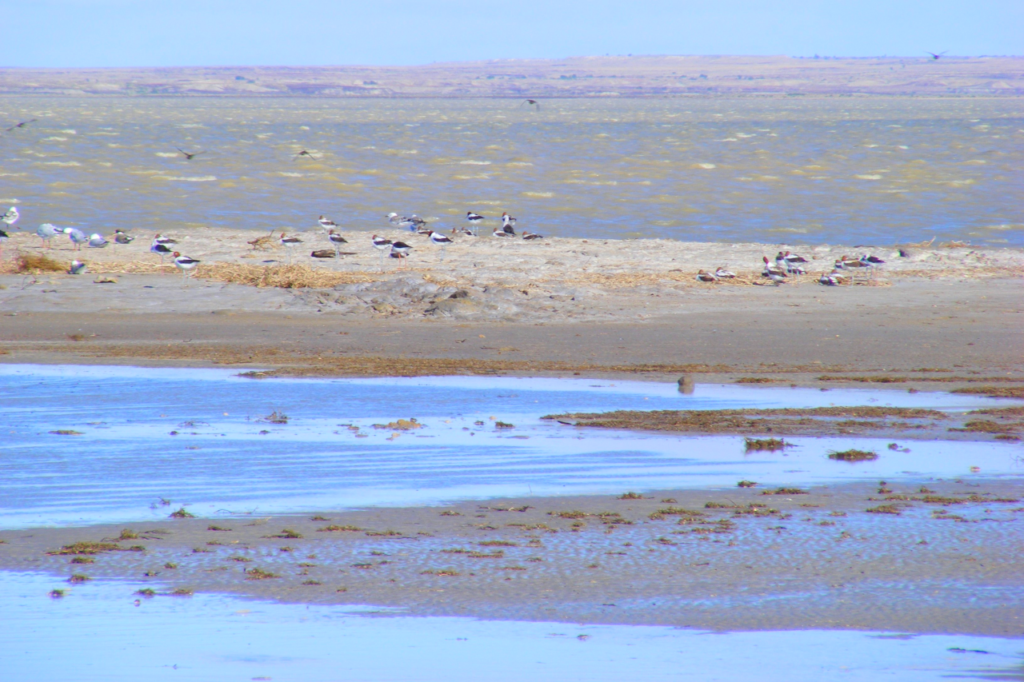
Here, Red-necked Avocets rest on the Lake shore, along with some the usual Silver Gulls, which seem to be everywhere.
The next year I visited and the lake had returned to the much more likely salt.
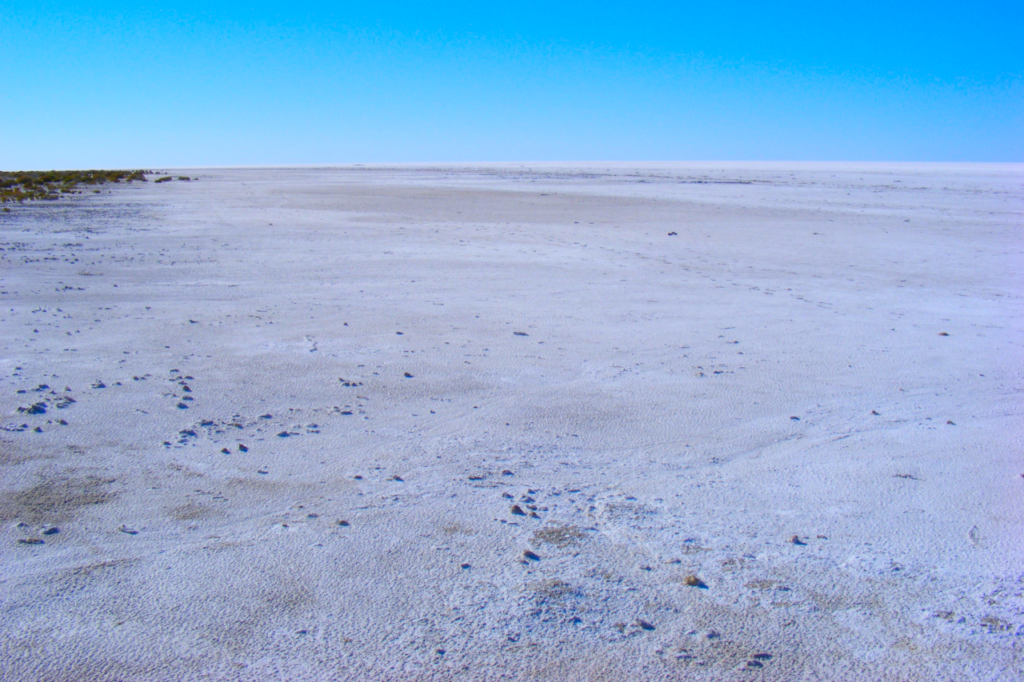
What struck me this trip was the complete and utter silence that greeted me when I walked to the edge of the salt lake.
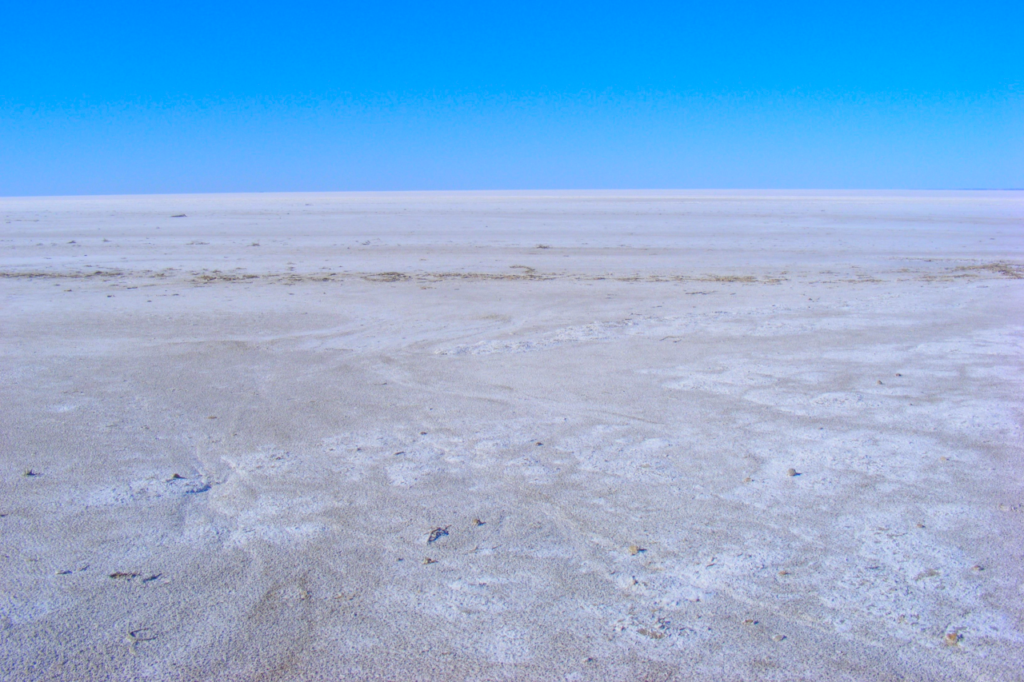
There were finches twittering away in the scrub on the shore, but there was nothing, not one single sound emanated from the vast salt plain glistening brightly in the sunlight in front of me.
The moon-like landscape near Halligan Bay, Lake Eyre.
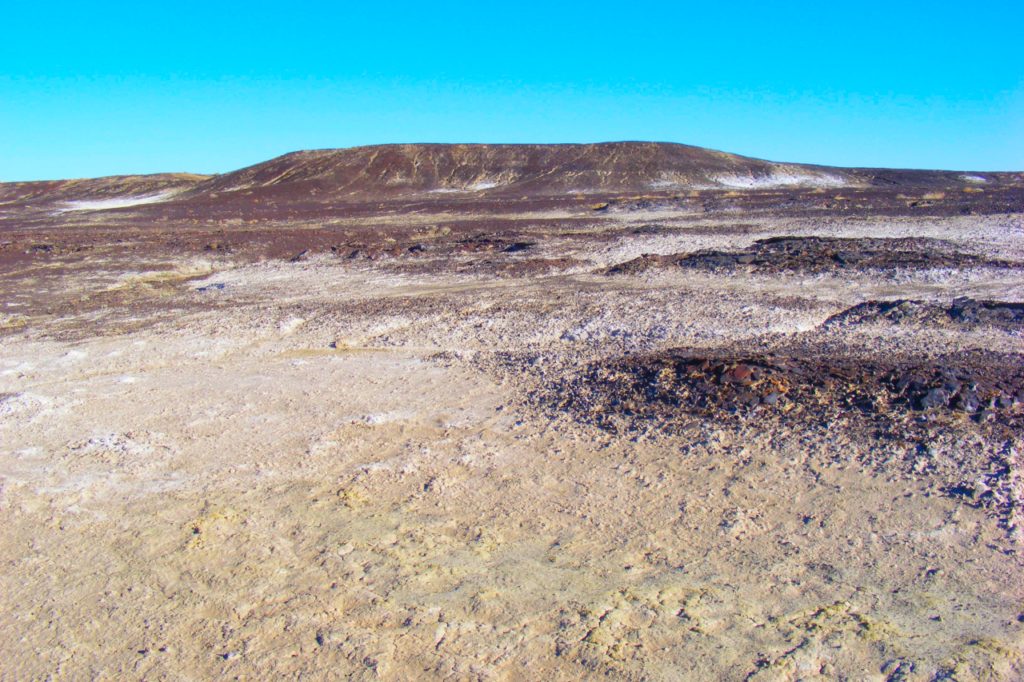
On my third venture out to Halligan Bay, where I camped entirely on my own in a rather stiff breeze (this was in 2016, in those days, before the Active Camper came along, I was still camping in a tent). This little clip gives you an idea of just how breezy it was – fortunately the tent stayed up, but it was a bit touch and go at times…
I did get up very early and enjoyed the amazing experience of watching the sunrise over the salt of the lake.
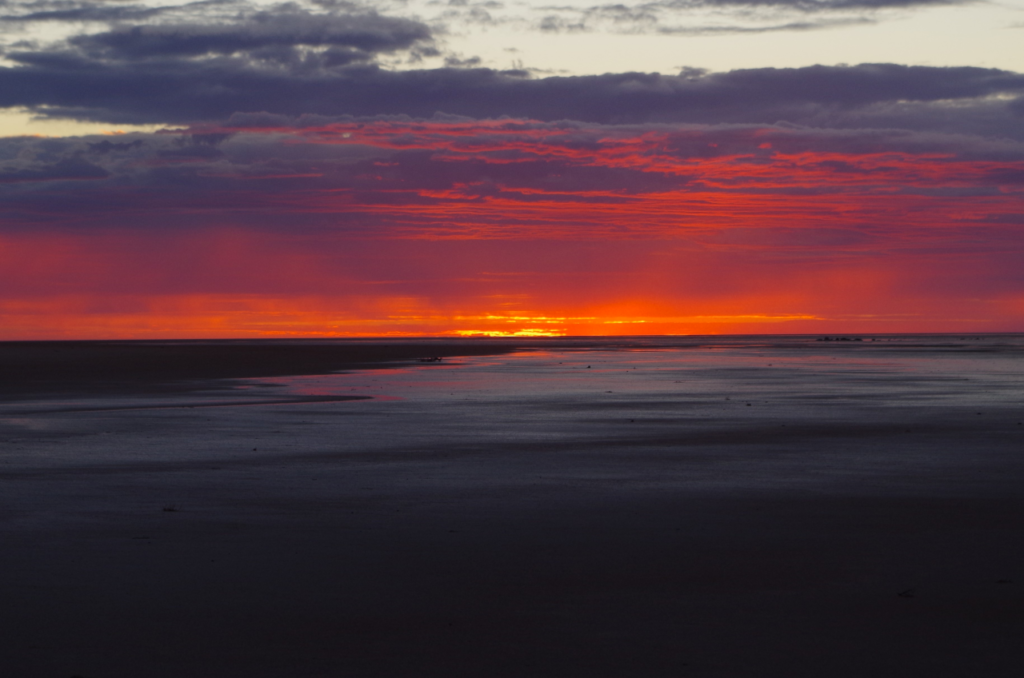
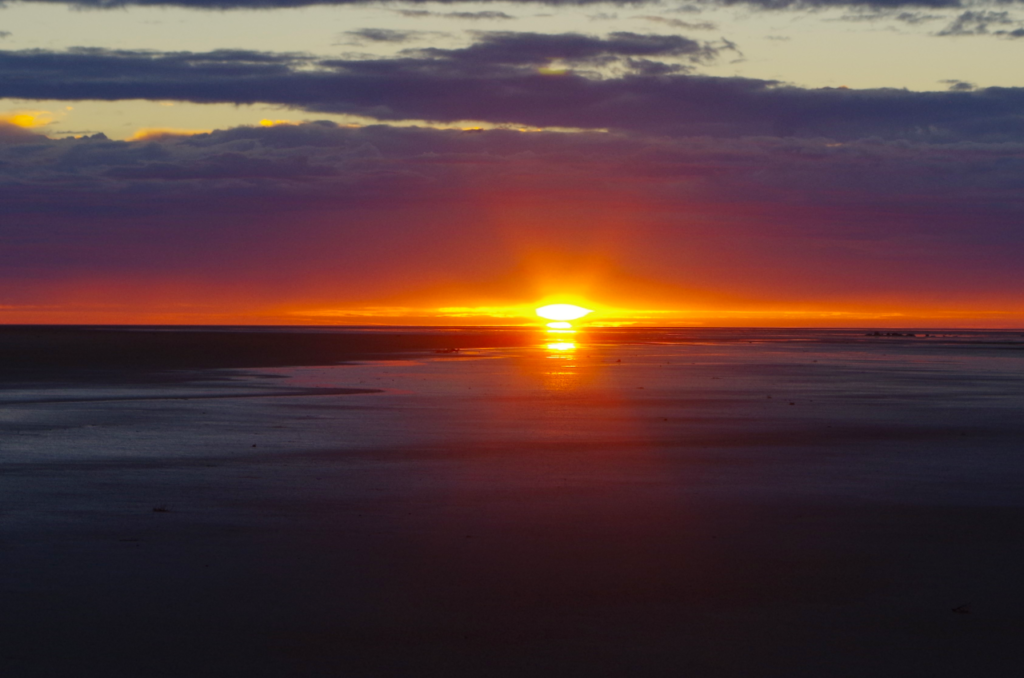
I think it was standing here, watching this sunrise, that I realized that EVERY day could be like this!
And now it is, pretty much!
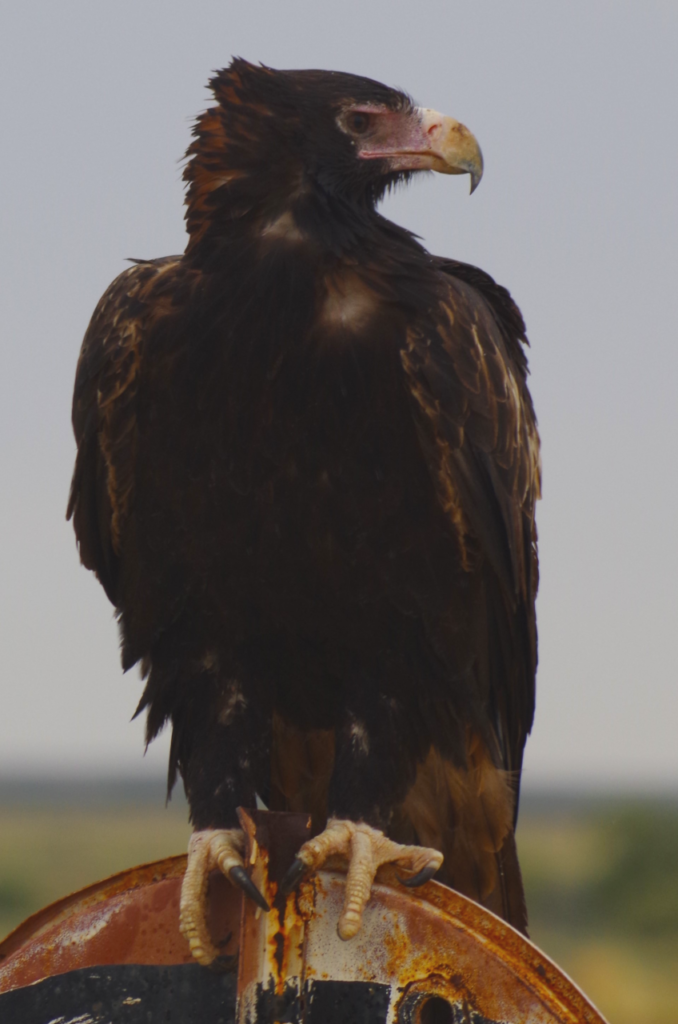
The Royal Mail Hotel, Hungerford, Qld
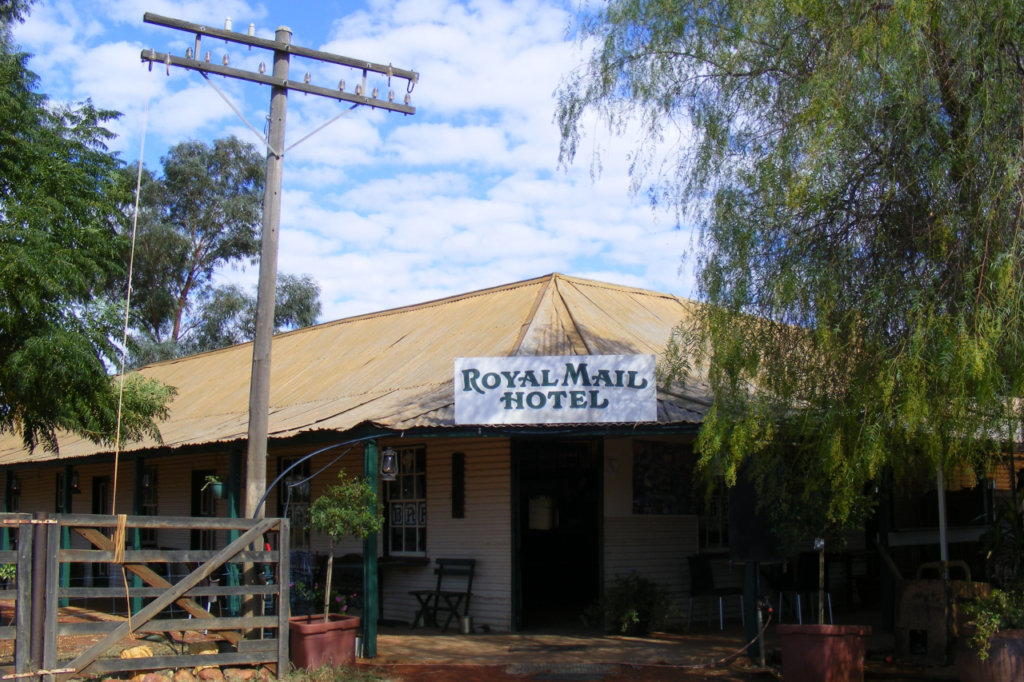
This fabulous pub sits in Hungerford, a little town directly on the NSW/Qld border. Constructed of corrugated iron in 1873 and originally a Cobb & Co staging post, the current building dates from c. 1897 onwards.
Apparently in response to public criticism of his work by Banjo Patterson, the poet Henry Lawson walked from Bourke to Hungerford and back again, over December and January of 1892-93. This is still a distance of over 200km each way… Lawson’s thinking was this would help him to gain experience of ‘the bush’, for his writing.
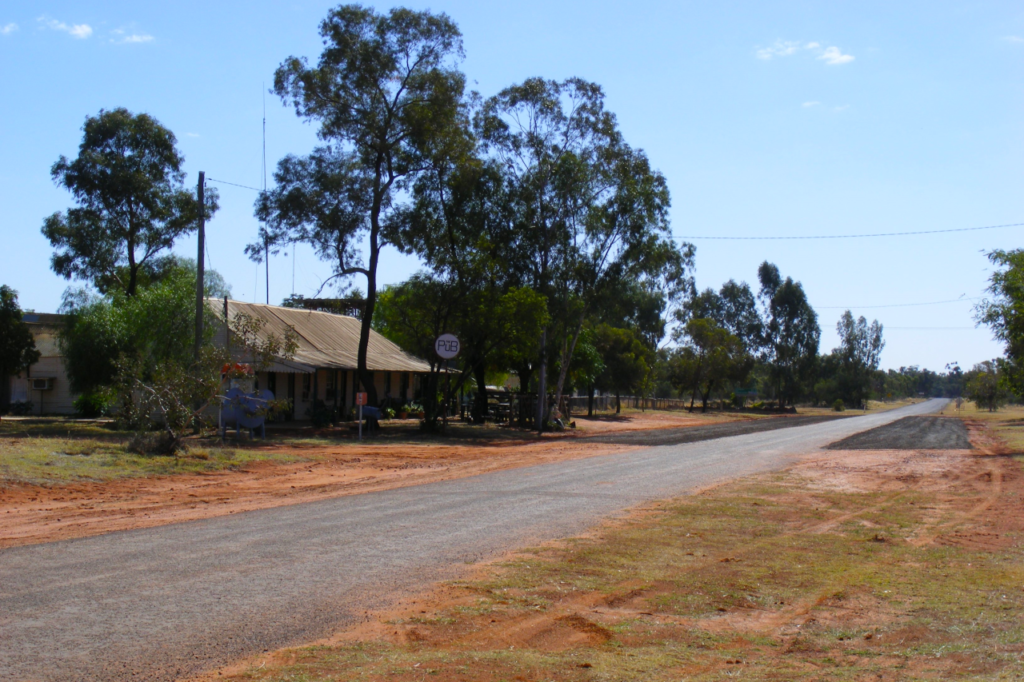
Lawson hated Hungerford and wrote to an aunt that he was “over the bush”. He also wrote he was served warm beer, so maybe that influenced his opinion somewhat… However, this trip did positively influence his work for many years to come.
The town originally straddled the border, with houses located on both sides of the rabbit-proof fence that split the town in two, separated by a large gate – although, according to Lawson, the fence was a failure, as there were rabbits on both sides of it… the fence and gate are still there; I didn’t see any rabbits, though.
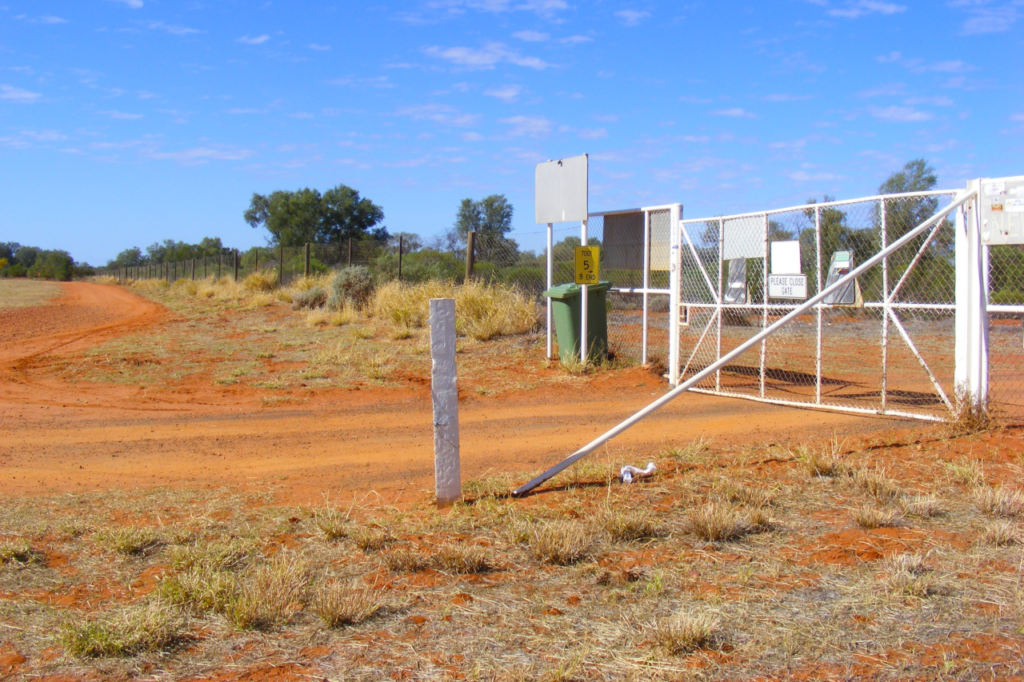
I found Hungerford a lovely and welcoming little place, with great food at the pub. The existing stone fireplace is supposedly the same one Lawson drank his warm beer in front of when he was here around 128 years ago (I am happy to report the beer was suitably cold when I drank there!)
Big Red, Birdsville.
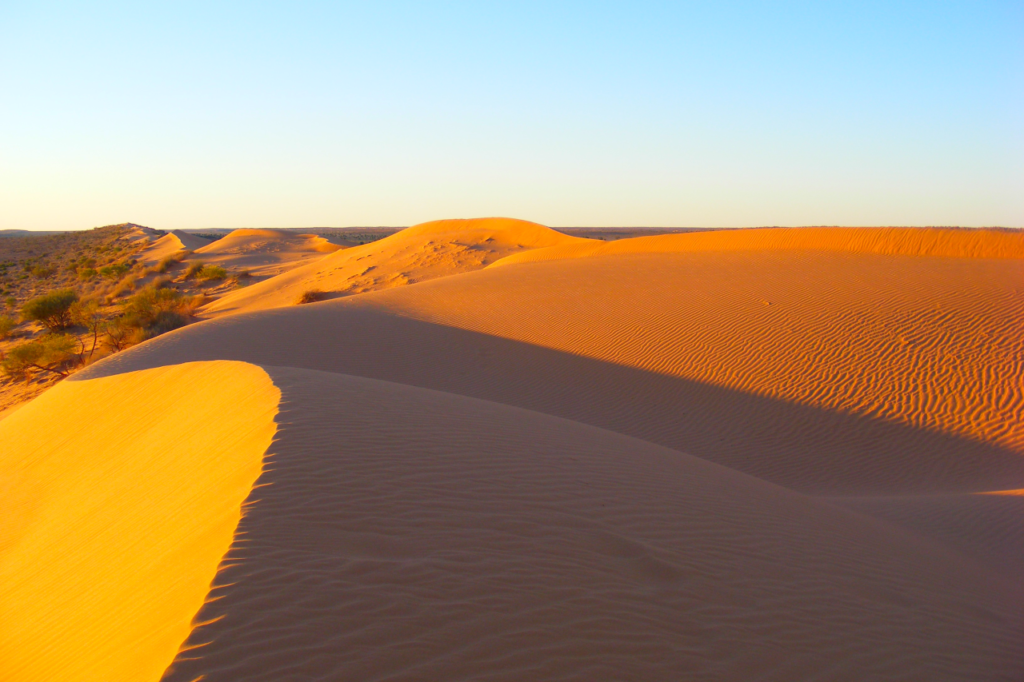
Sitting on the top of Big Red, this amazing dune catches the rays of the setting desert sun. Watching the sun setting over the Simpson Desert sand dunes is always a highlight of my trips to Birdsville.
The Dig Tree, QLD
On the banks of Cooper’s Creek, the Dig Tree is forever associated with the legend of the ill-fated Bourke and Wills expedition. The tree – thought to be up to 250 years old – was blazed with instructions for the explorers to “Dig” for buried food.
Weak from their journey and sickness, both Bourke and Will perished near here around 28-29 June, 1861.
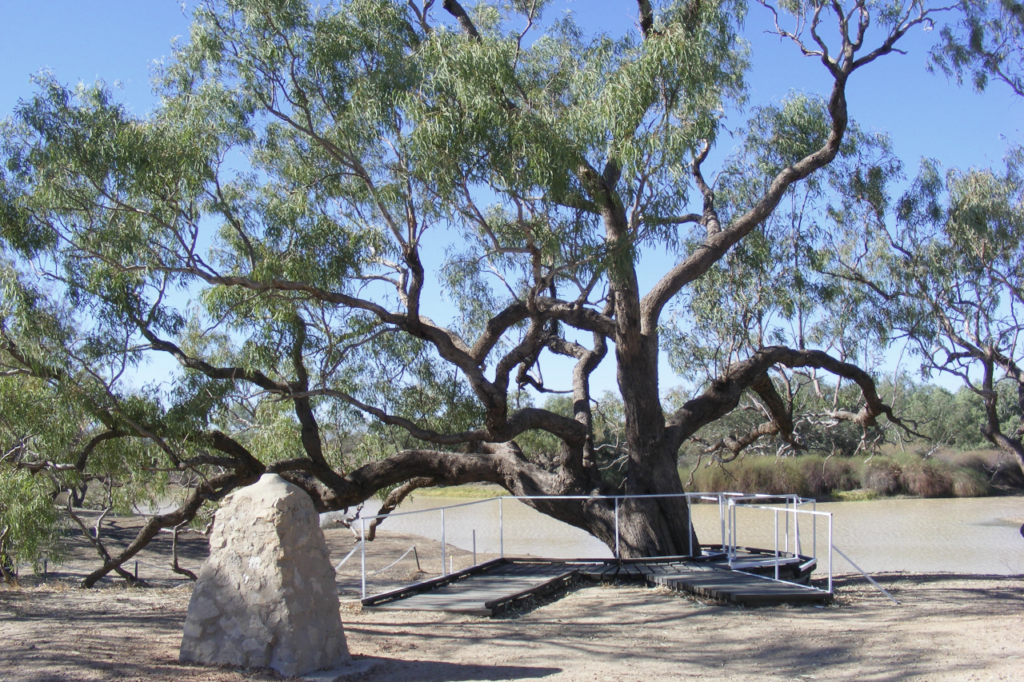
Sadly, the original “Dig” message no longer exists. It has been overgrown by tree bark, many years ago.
The tree was further blazed in 1861, marking this site as one of the expeditions camp locations. You can still just make out the ‘B’ for Bourke (who was insistent that this was his expedition, after all) and letters ‘LXV’ for Camp 65; not bad for a carving that was some 153 years old, when I photographed here in 2014.
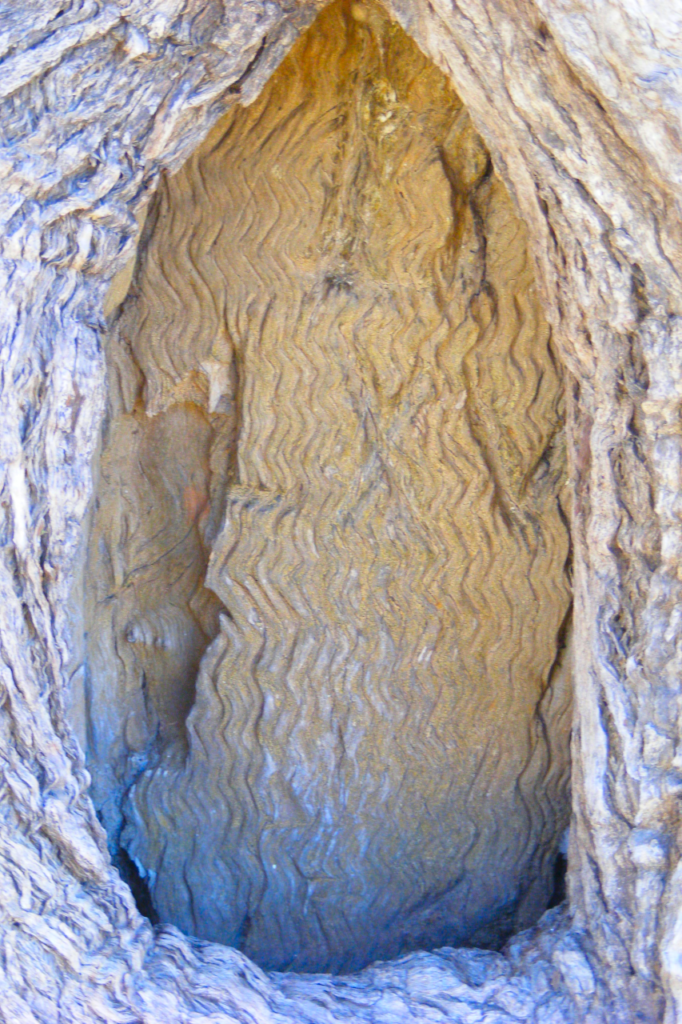
The Painted Desert, SA
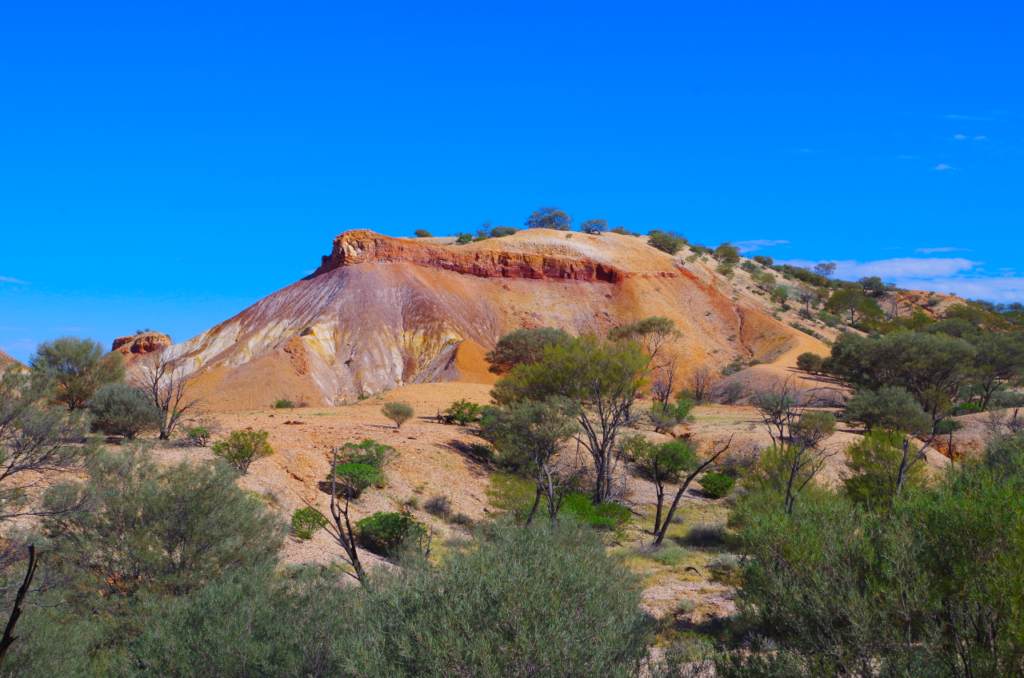
Not far (as the wedge-tailed eagle flies, anyway) from Oodnadatta, the aptly named Painted Desert is simply stunning.
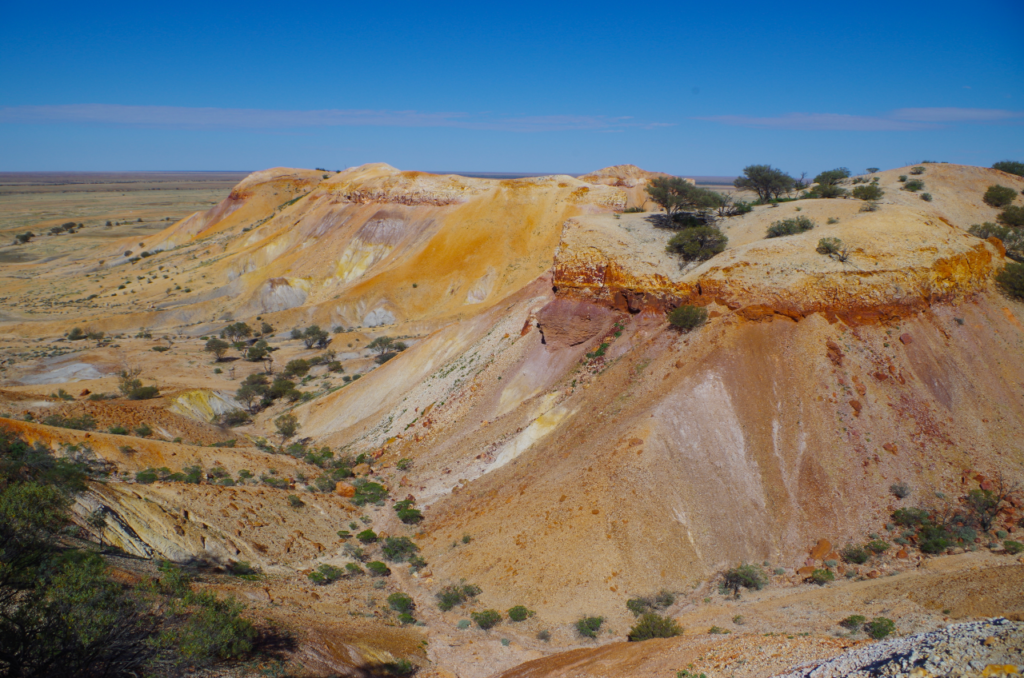
Multi-coloured sands, formed into imposing shapes by wind, really do look like they have been painted for our enjoyment.
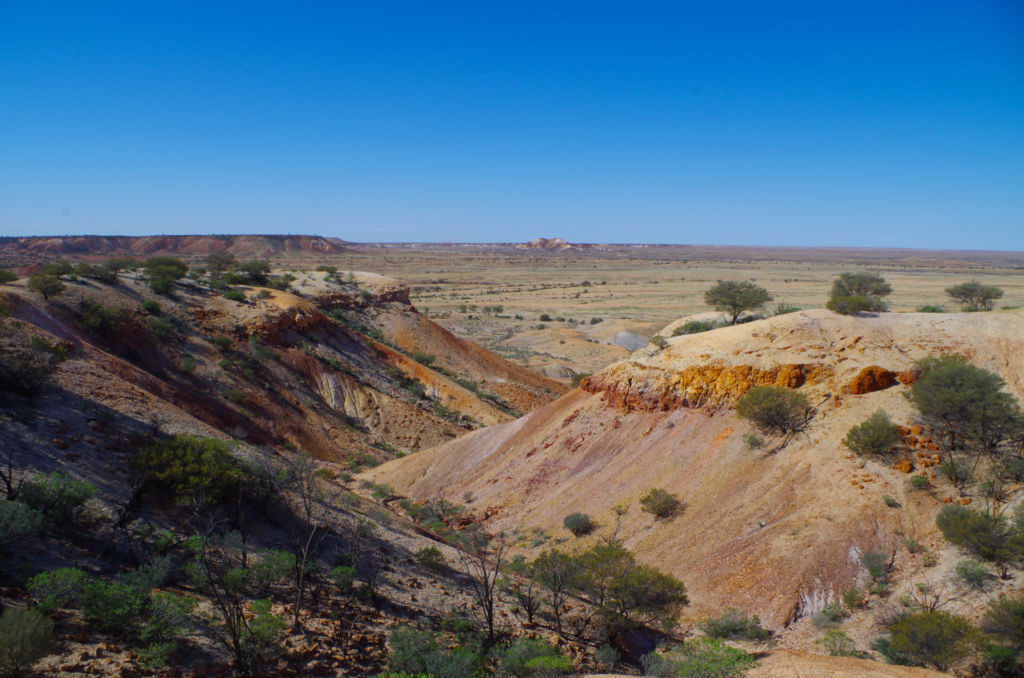
Windmill, near Oodnadatta, SA
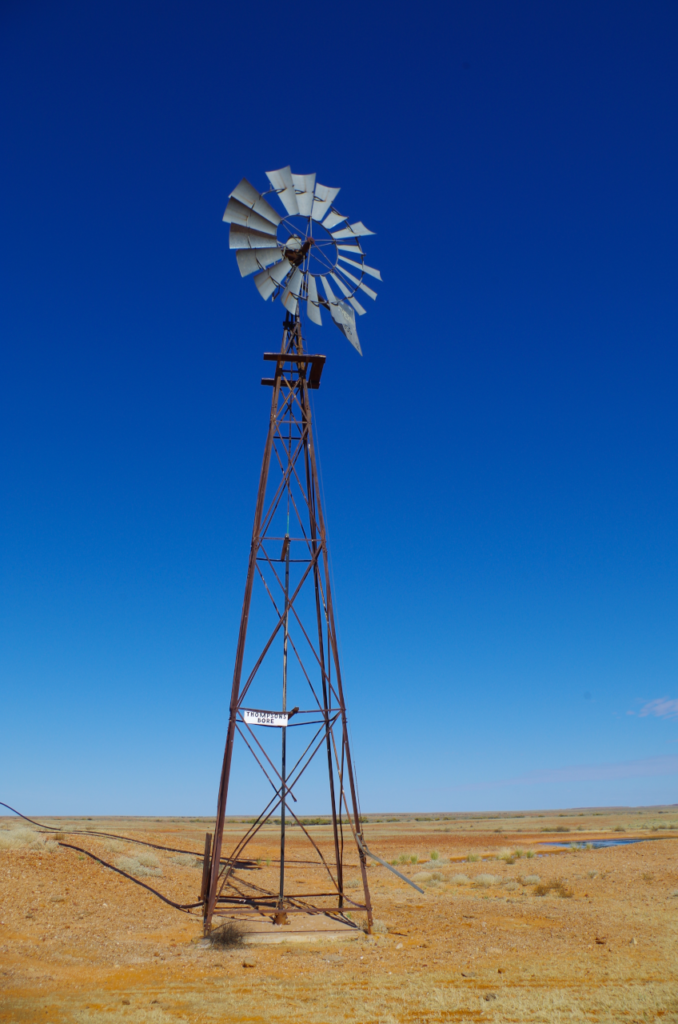
Not too many windmills are left in the country now; most have been replaced by solar/diesel pumps that sit at ground level, making maintenance much easier. Which is a pity, as there is something very romantic about windmills.
Tunnel Creek, WA
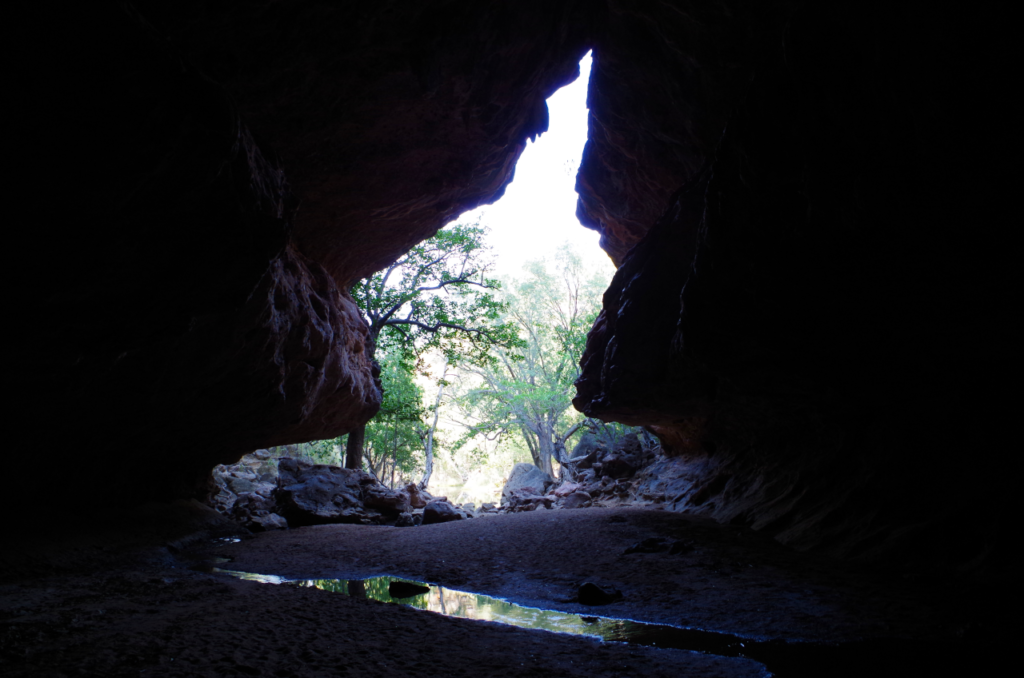
Once a hideout for outlaws, this amazing cave is fascinating to walk through. A torch helps, but not much, the darkness is pretty much absolute. A torch also highlights the glowing red eyes of the freshwater crocodiles that call the tunnel home.
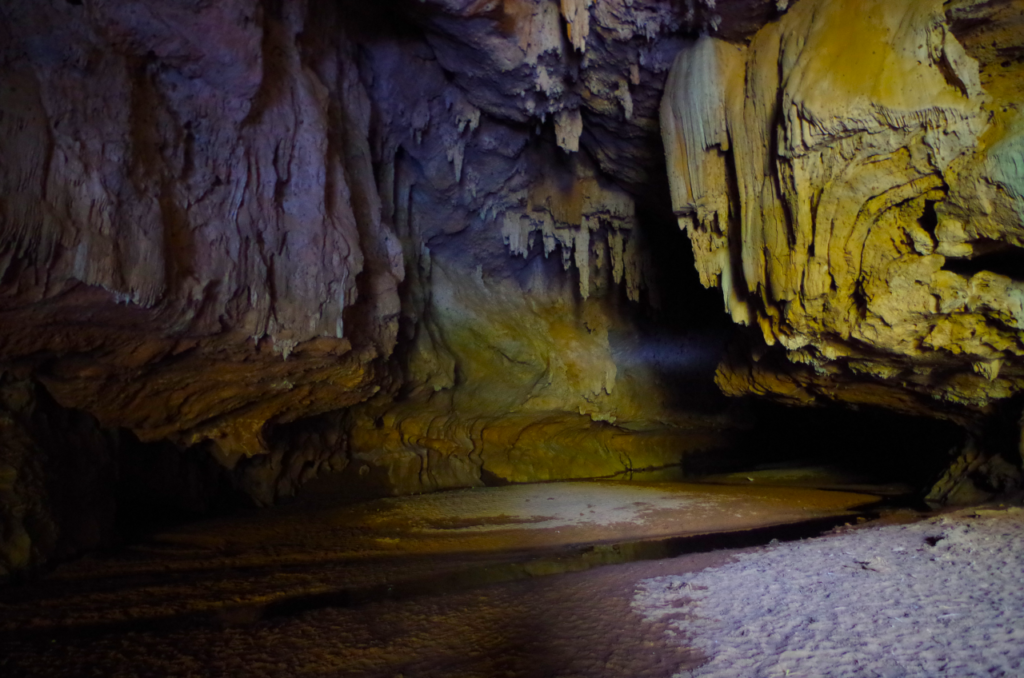
Except for a few cave-ins along its length, which allows sunlight to penetrate, the darkness inside is complete. It is well worth the walk though.
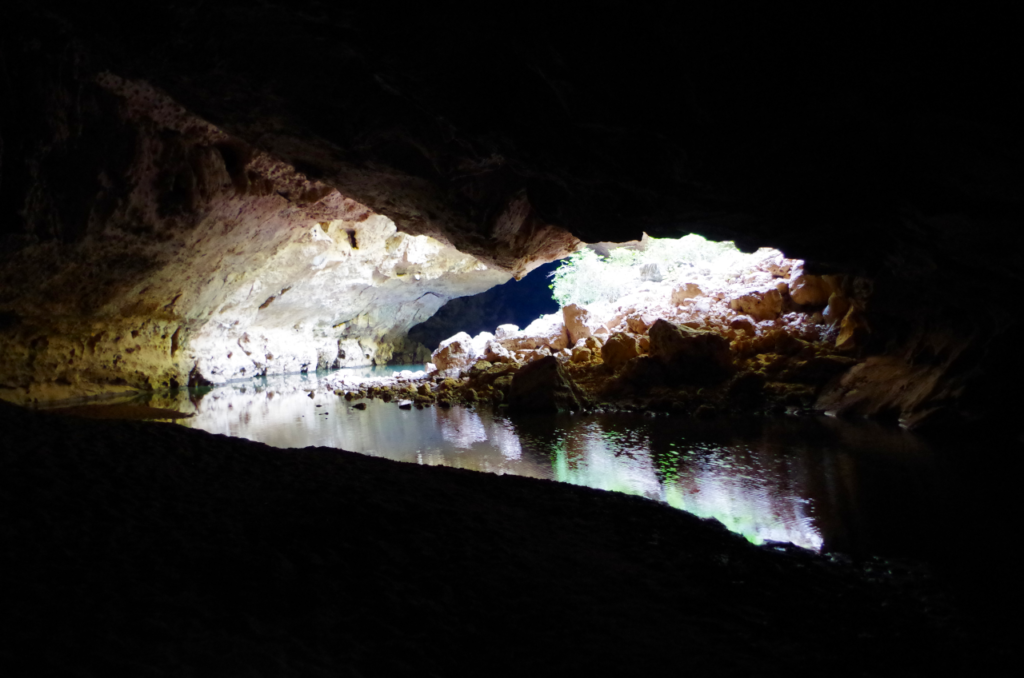
There are Aboriginal paintings located high up on the rock at the far end.
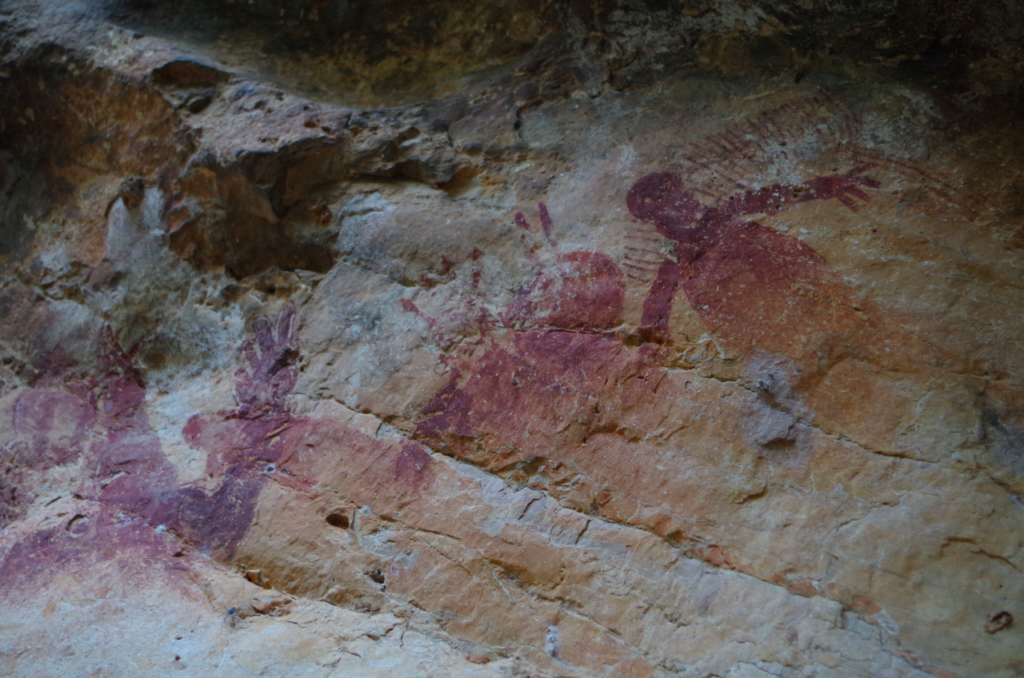
Purnululu National Park, WA
Otherwise known as the Bungle Bungles, this amazing national park is located in the remote Kimberley region of WA.
Red, red rocks, green trees and blue, blue sky… what more do you need?
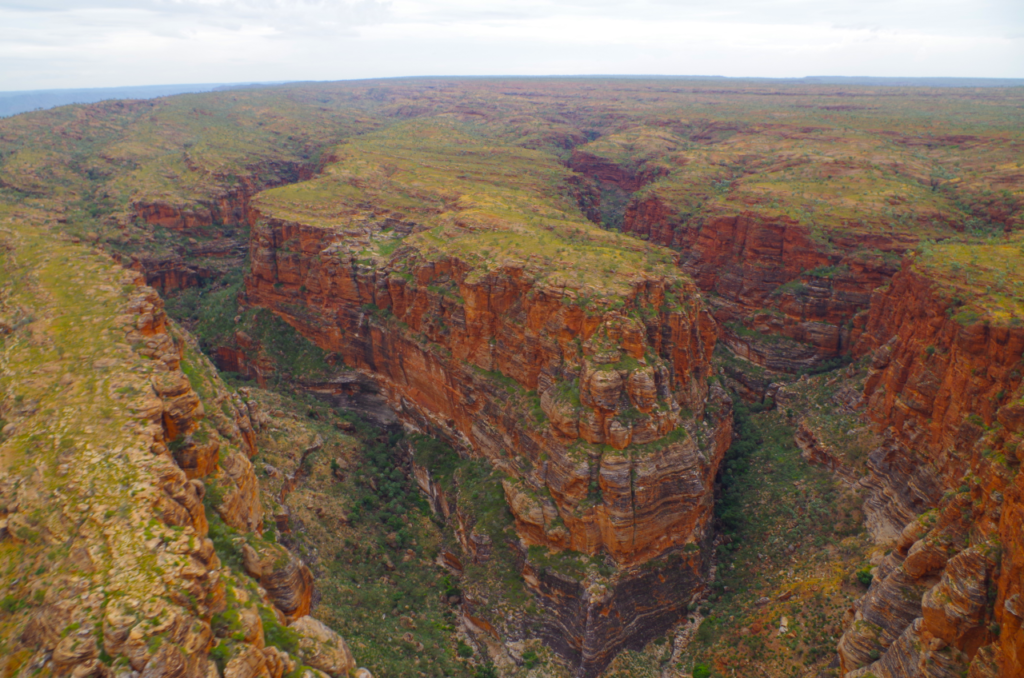
I took a helicopter flight here, which allowed me to experience inaccessible parts of this spectacular country and appreciate the vastness and remoteness of this area.
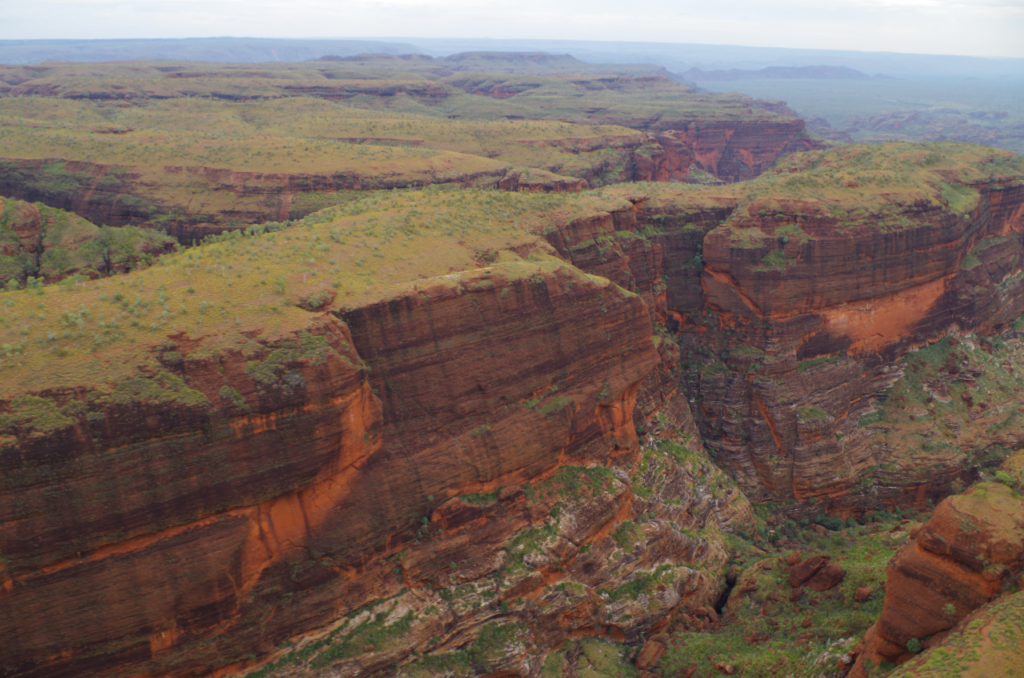
The Domes
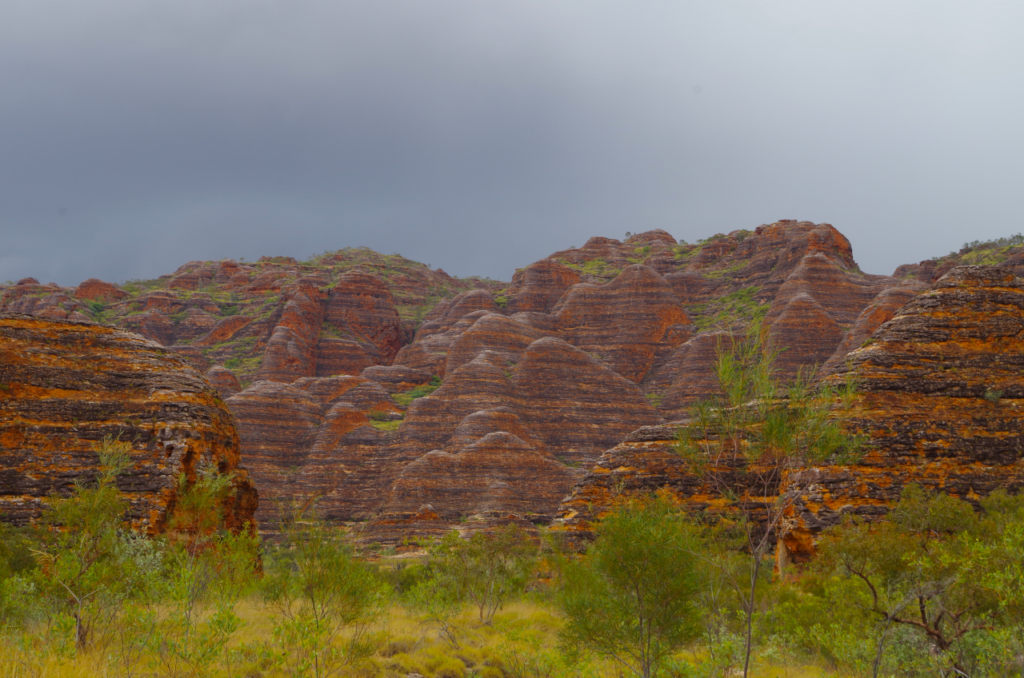
When I was here in 2016, it rained. Not normally something you want to experience on your holidays, the rain came down while I wandered around the stunning, magestic banded rock domes.
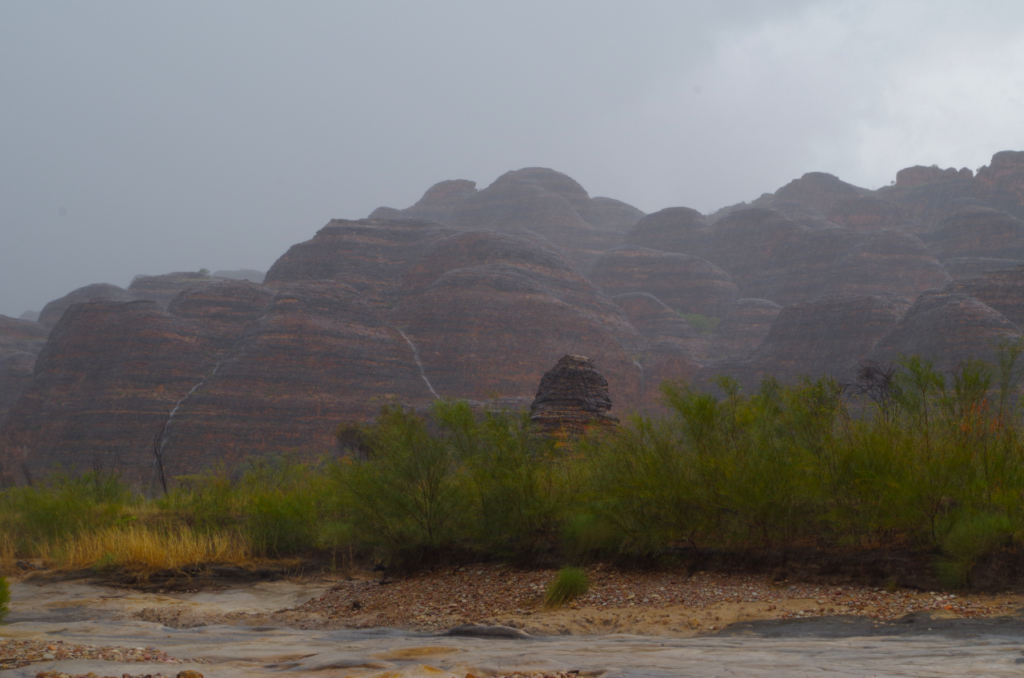
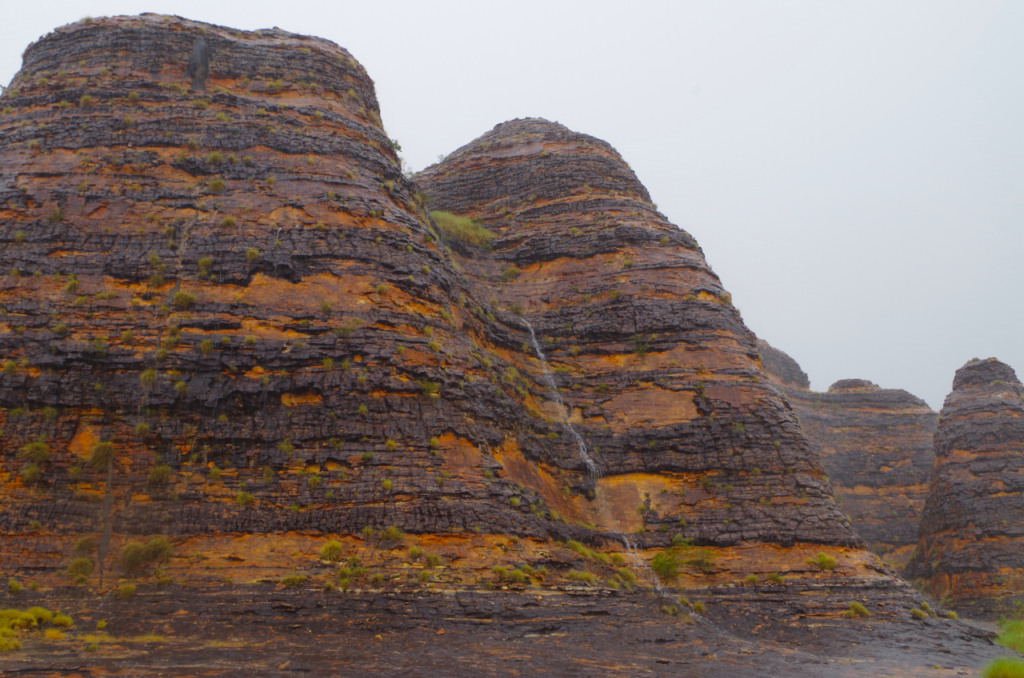
I watched in awe as water cascaded down these unique formations. It was pretty heavy rain and I was soaked and cold, but the vision of these waterfalls running made any discomfort worthwhile.
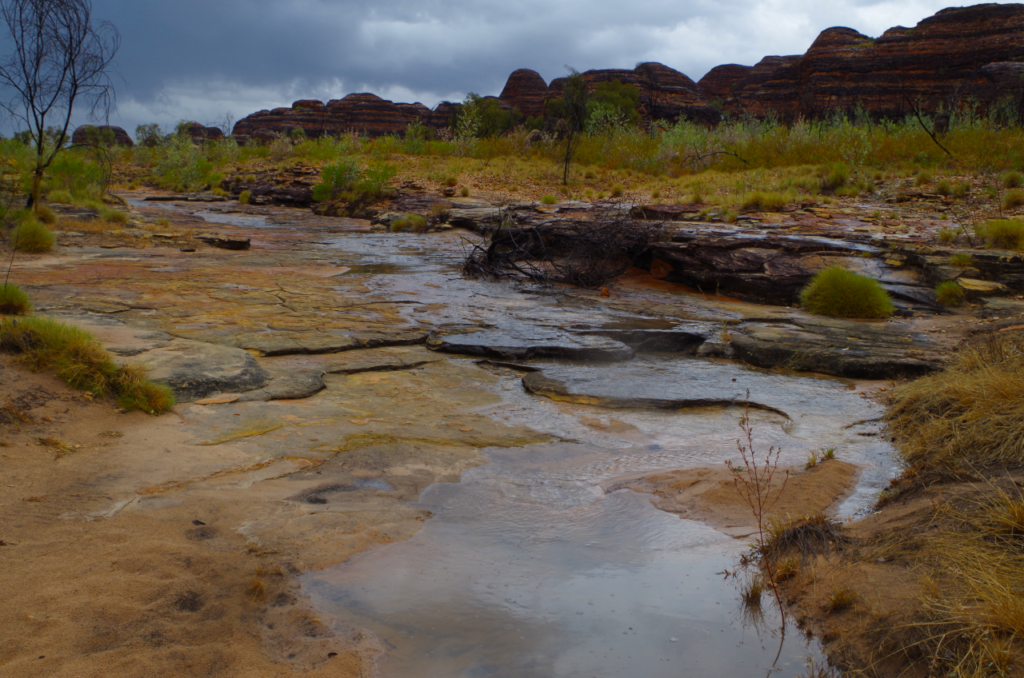
Cathedral Gorge
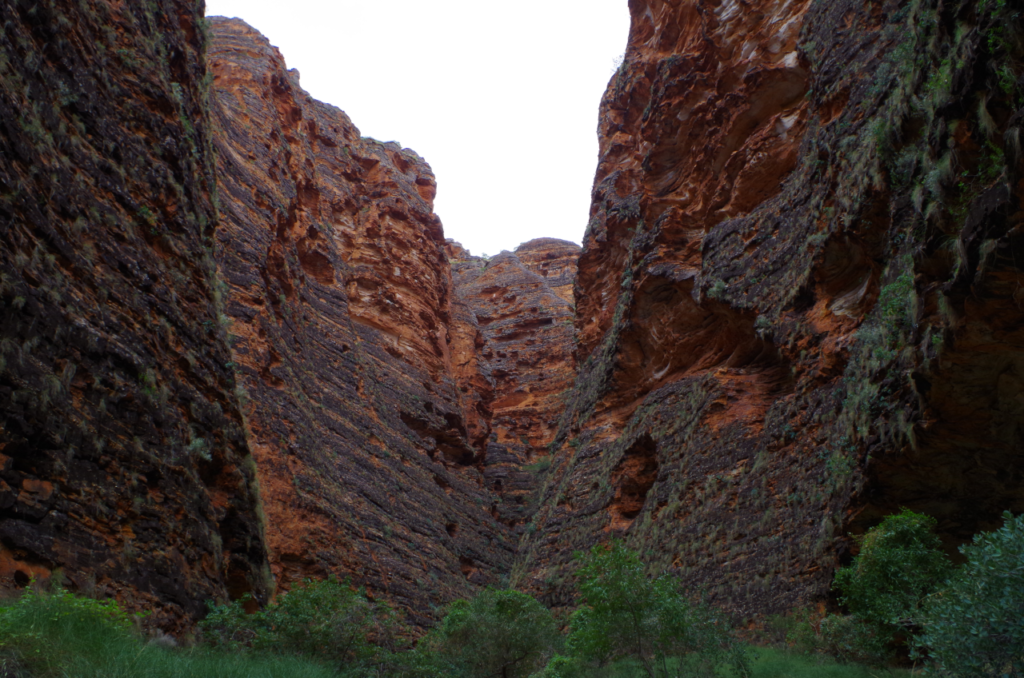
A natural amphitheatre with towering cliffs and honeycomb rocks.
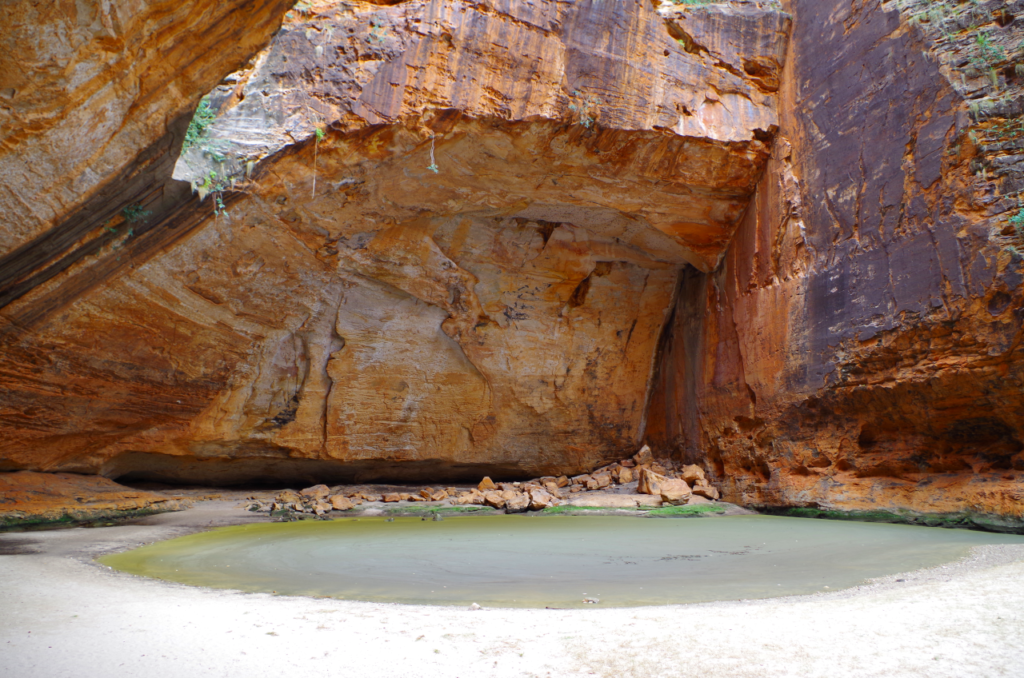
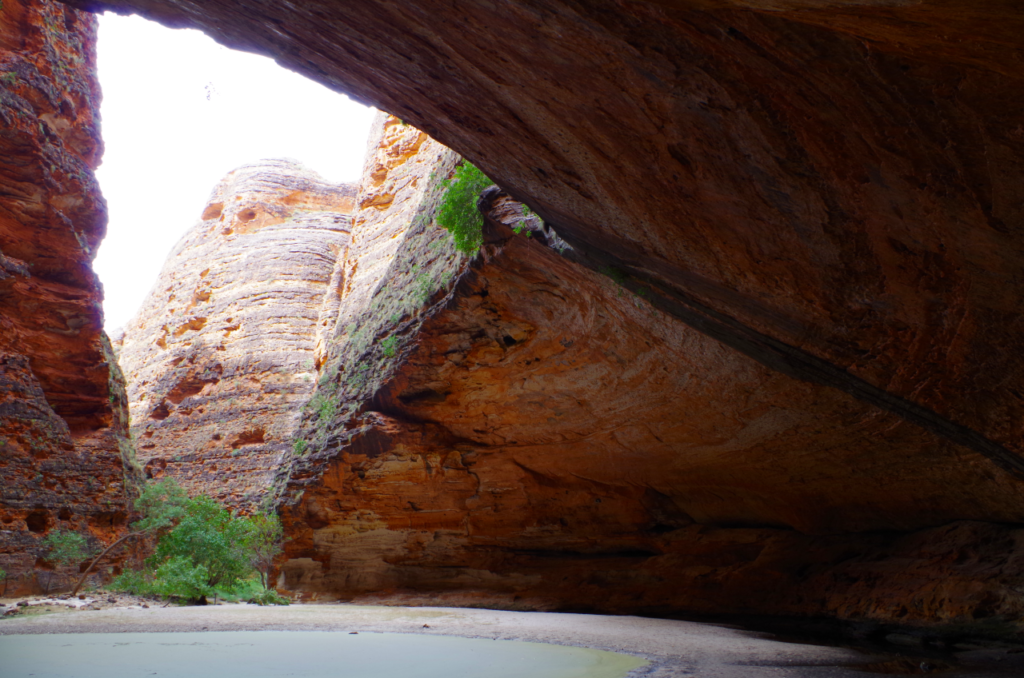
Echidna Chasm
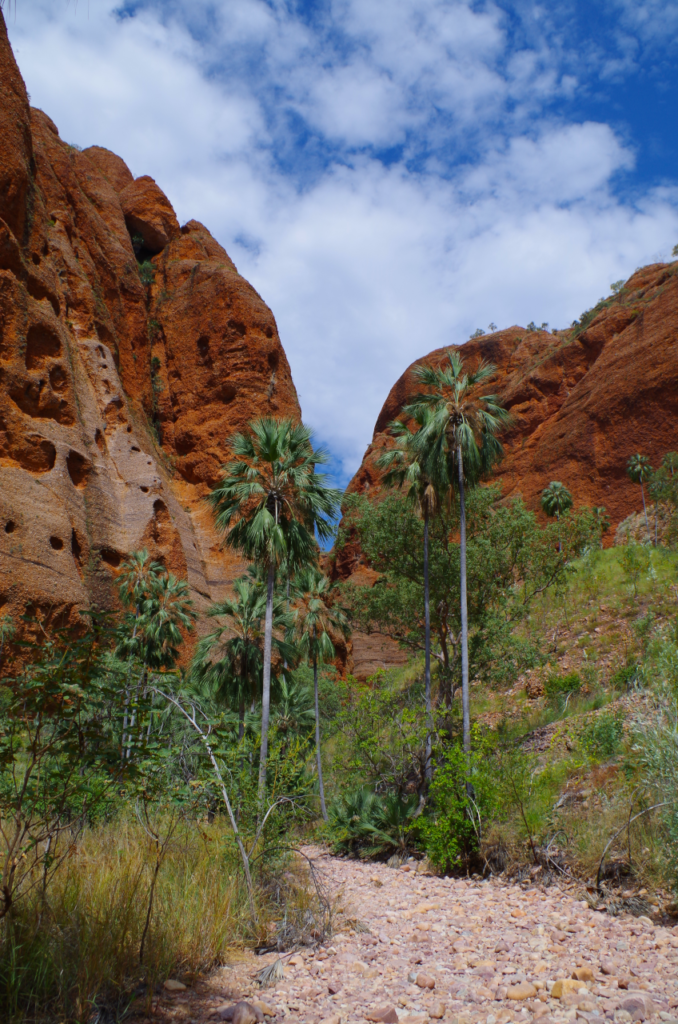
I visited this spectacular chasm during the middle of the day.
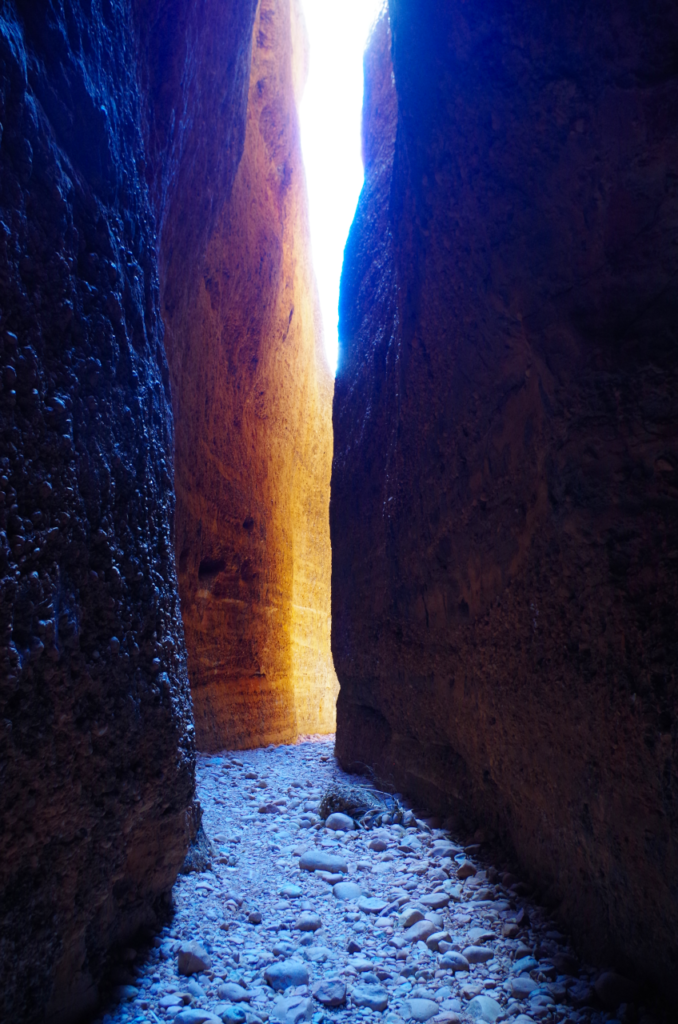
For a short time, sunlight flooded the cool, dark depths of this space, lighting it with awesome colours.
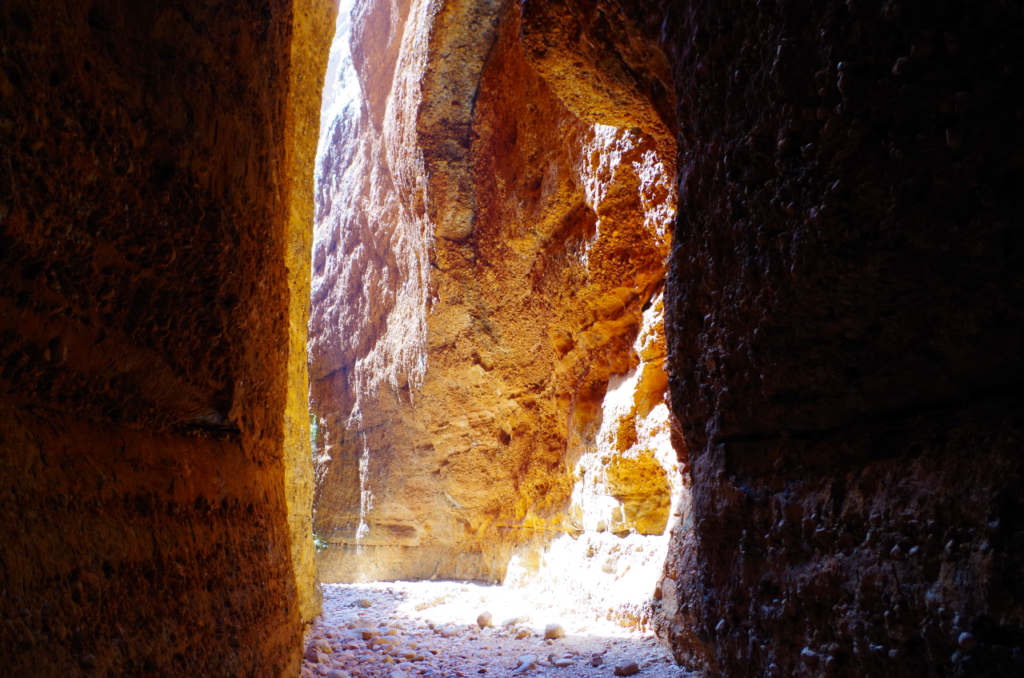
Sunset at the Escarpment
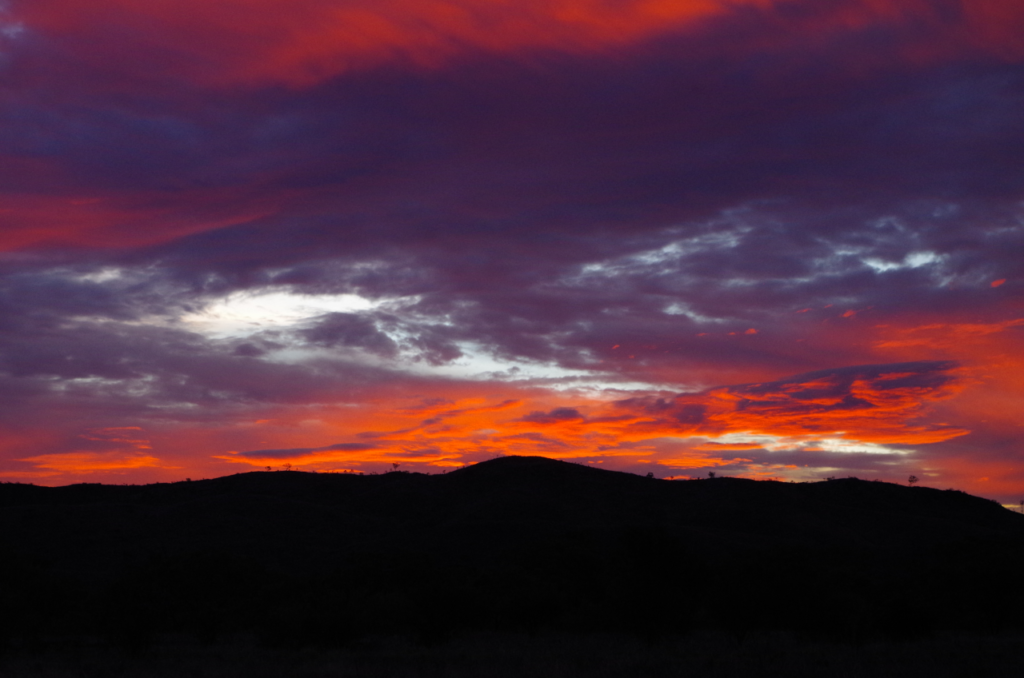
A spectacular sunset and the rock cliffs glowing a spectacular red in the days dying light.
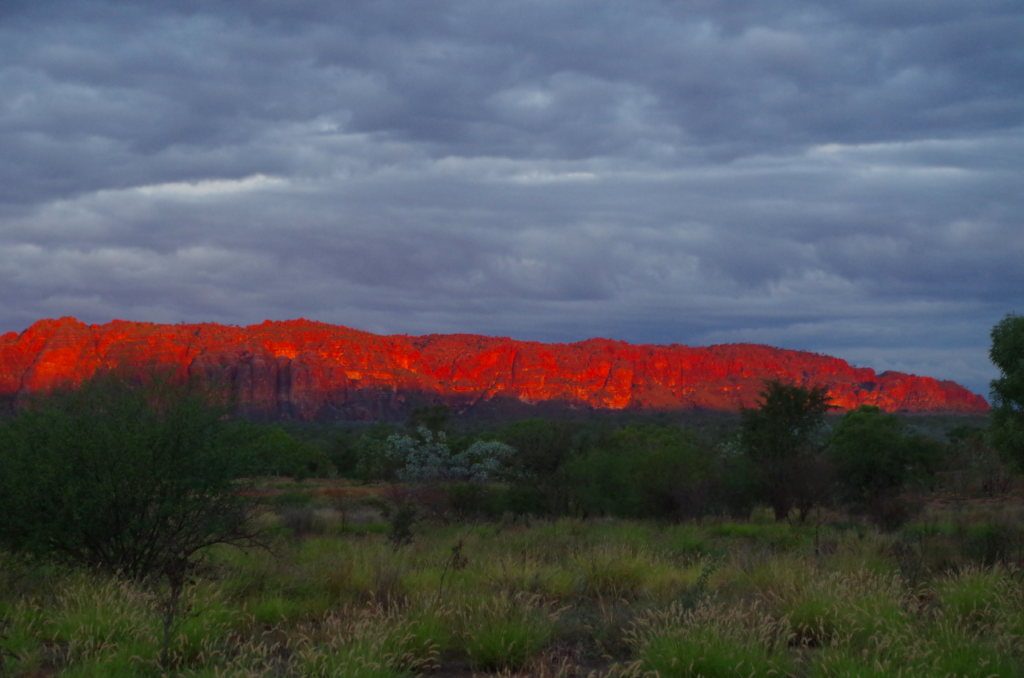
Flinders Ranges, SA
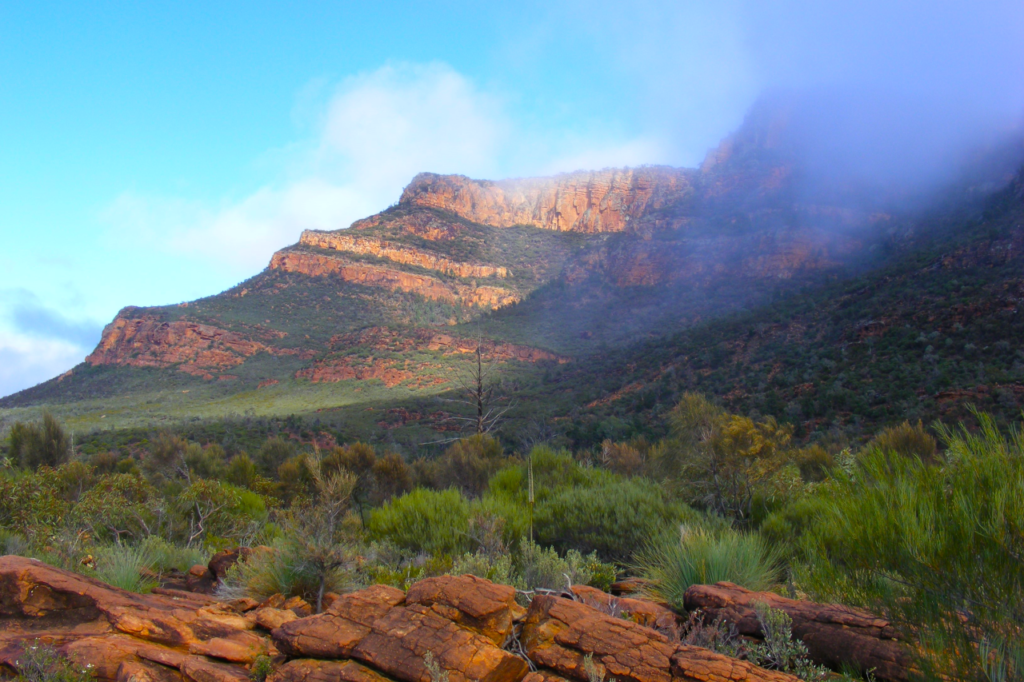
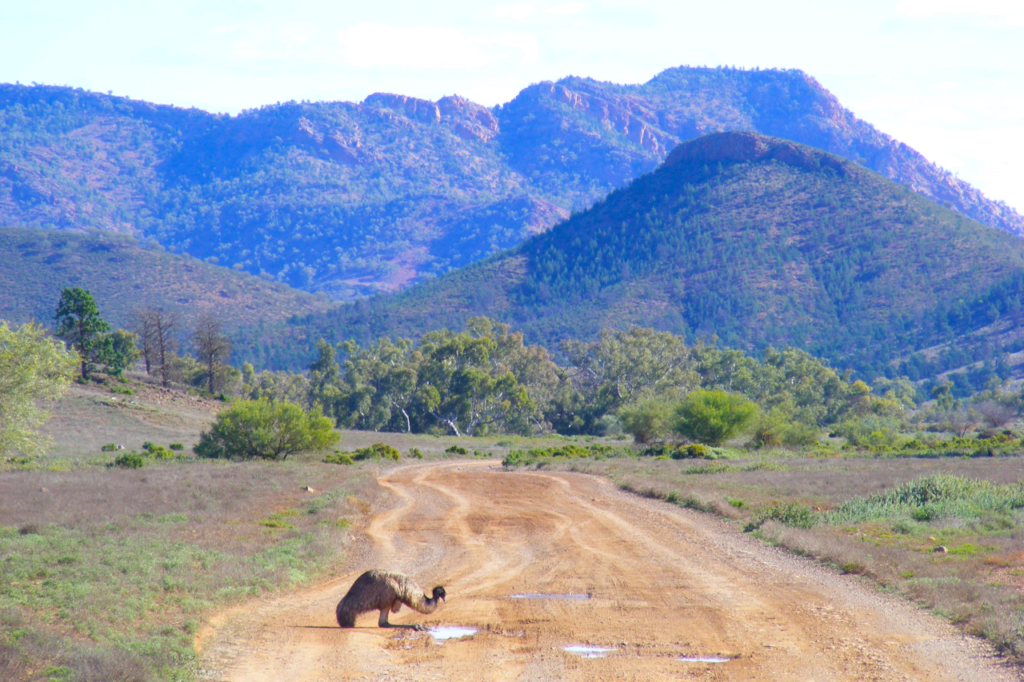
An emu enjoys a drink from a rain puddle, after a shower of rain that left the road fairly slippery.
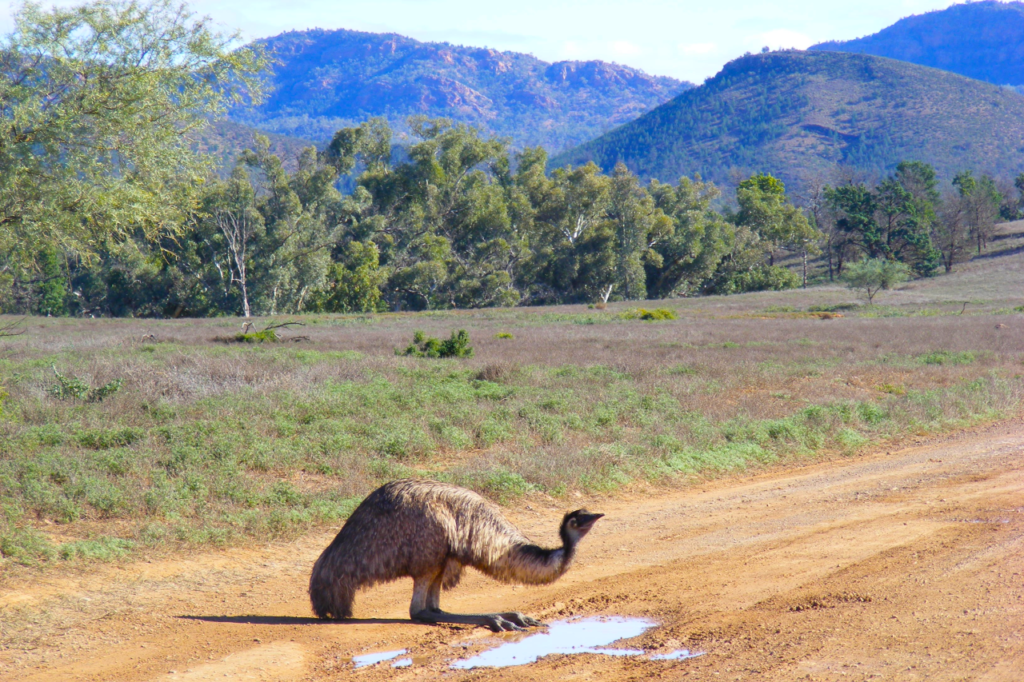
The Flinders Ranges are really spectacular and will need another visit before too much longer, I feel. I hope…

So, I really think I need to finish this celebratory post off with one more outback sunset image, because I don’t think you can ever see enough outback sunsets!!! Or sunrises, or sunny days, or rainy days, or starry nights…
